Welcome To Our
Parenting Book Guide
We're Glad You're Here
You’re here because you love your child, tween, or teen and you’re looking for guidance that honors who they are and the journey you’re on as a parent or caregiver.
With so many parenting books out there, it can be hard to know where to begin. Our team at Early Connections carefully created this guide to make beginning easier. We believe the best parenting resources are grounded in compassion, backed by research, and affirming of every child’s identity. The books in this guide reflect our core values: connection over control, curiosity over judgment, and growth over perfection. Each one was handpicked because it supports real families — just like yours — with practical tools and a lot of heart.
Many of the books are written by therapists, researchers, or parents who’ve walked similar paths — and all of them offer guidance without shame, fear, or one-size-fits-all advice. Most of the books are for parents to read on their own. Some are written for parents to read with their children, or for their children to read on their own. For books on sensitive topics written for kids (i.e. puberty and sexual development), we always recommend parents read them before their child reads them.
How To Use This Page
Use the Table of Contents below to explore the guide. The books are organized into themed sections based on common parenting questions and concerns. Each section includes short “Start Here If” and “What These Books Have In Common” blurbs to help you decide if the topic fits your current needs. Then there is a breakdown of each book, including the target age range, what it offers, suggestions for where to start, and a link to purchase the book.
You don’t need to read everything. Just find the section that speaks to what you’re going through — or what your child might need — and begin there. Let these books be companions, not checklists. Happy Reading!
Table of Contents
Big Feelings & Behaviors
Start here if...
You’re struggling to understand your child’s meltdowns, defiance, or outbursts — and want more than just short-term fixes. This section is for caregivers who sense there’s more going on beneath the surface and want to respond with connection, insight, and long-term strategies that promote emotional growth.
Big feelings and intense behaviors can leave even the most patient parents feeling defeated. These books will help you see your child’s behavior through a new lens — one that emphasizes safety, skill-building, and the parent-child relationship over punishment or control
What These Books Have In Common
Each book in this section rejects the idea that misbehavior means a child is “bad” or needs to be corrected through control. Instead, they focus on the emotional and physiological roots of behavior, offering tools to support your child’s development while preserving your connection. Whether you’re parenting a child with trauma, ADHD, big emotions, or just strong-willed energy, these books will help you respond with more self-regulation, clarity, and confidence
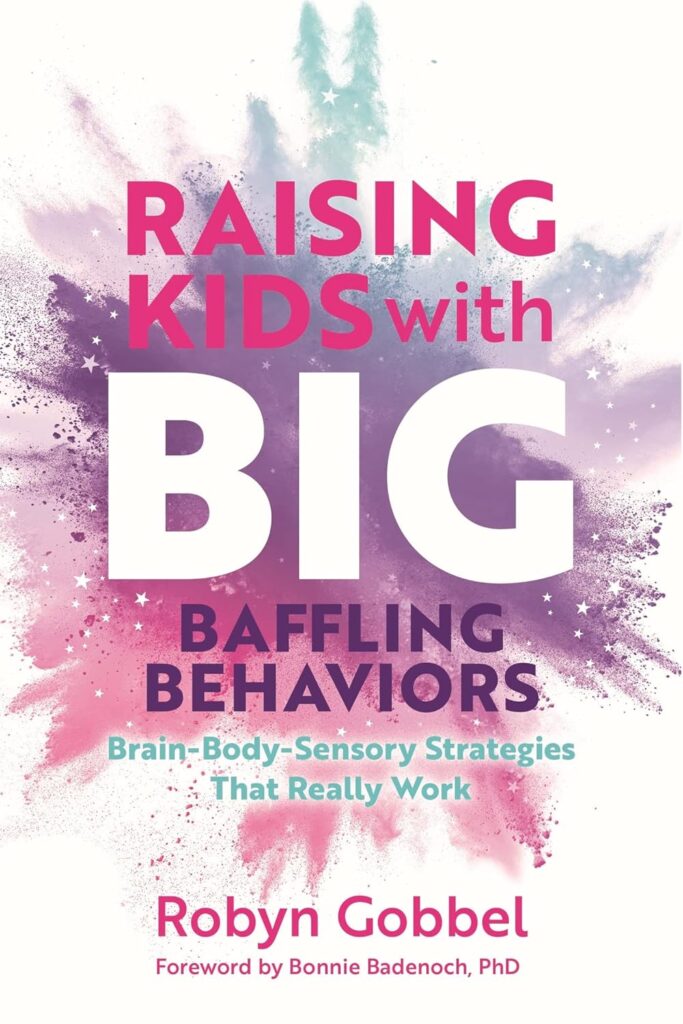
Raising Kids with Big Baffling Behaviors
By: Robyn Gobbel, lcsw
Target Age Range: Broadly applicable, especially for parents/caregivers of young people ages 3–12
Gobbel brings a trauma-informed, neurobiology-based lens to behavior. It’s especially helpful for caregivers of kids with histories of early adversity, neurodivergence, or intense dysregulation. Robyn’s compassionate tone and “felt-safety first” approach are game-changing
Read First If… you’re feeling overwhelmed and need a deeply compassionate, grounding framework to help make sense of your child’s big emotions and outbursts

Punishment-Free Parenting
By: Jon Fogel
Target Age Range: Broadly applicable, especially for parents/caregivers of young people ages 2–10
Tired of punishing your kids, and those punishments not working? Then read this book! Fogel challenges the cultural norm of using control and consequences to change behavior. It’s a call to shift your mindset — from authority and compliance to relationship and collaboration — with clear, honest guidance for making that shift
Read First If… you’re questioning conventional discipline approaches and want guidance for parenting without punishment, shame, or yelling

Brain Body Parenting:
By: Mona Delahooke, PHD
Target Age Range: Broadly applicable, especially for parents/caregivers of young people ages 2–12
Delahooke focuses on how a child’s nervous system and stress responses impact behavior. This book is ideal if you want to understand co-regulation and how to support your child’s sense of safety through your presence and responses
Read First If… you’re curious about the science of co-regulation and want to understand how your presence and responses shape your child’s ability to manage emotions
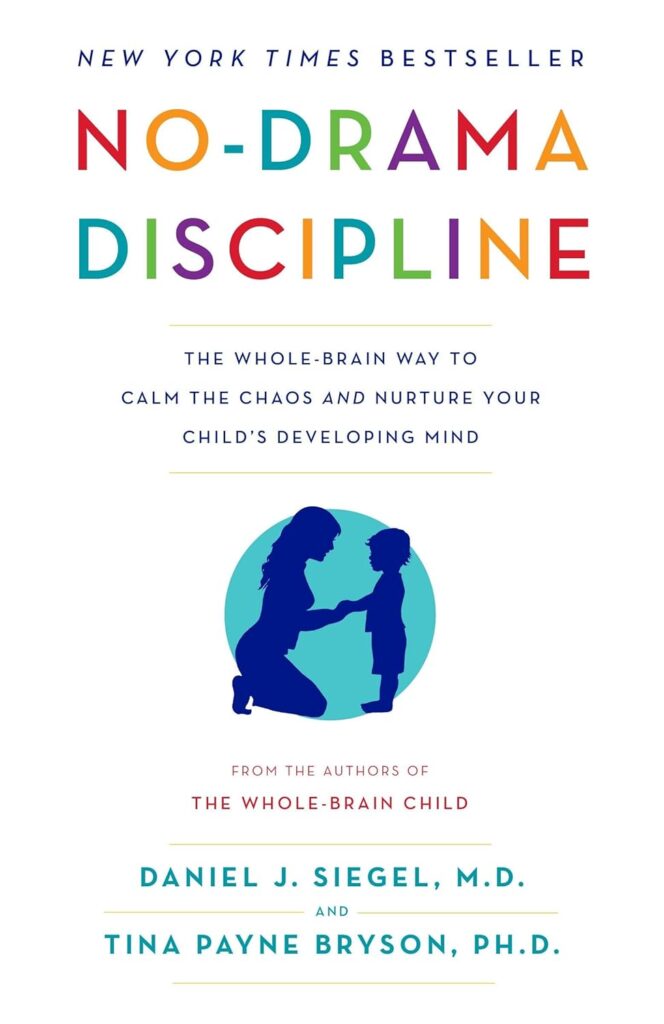
No Drama Discipline
By: Dan Siegel, MD and Tina Payne Bryson, PHD
Target Age Range: Best for parents/caregivers of young people ages 2–10, but useful through early adolescence
Siegel and Bryson teach how to handle discipline moments with empathy and brain-based insight. It’s practical, approachable, and great for learning how to repair and reconnect after difficult moments
Read First If… you want immediate, brain-based strategies for responding calmly to your child’s behavior while preserving connection
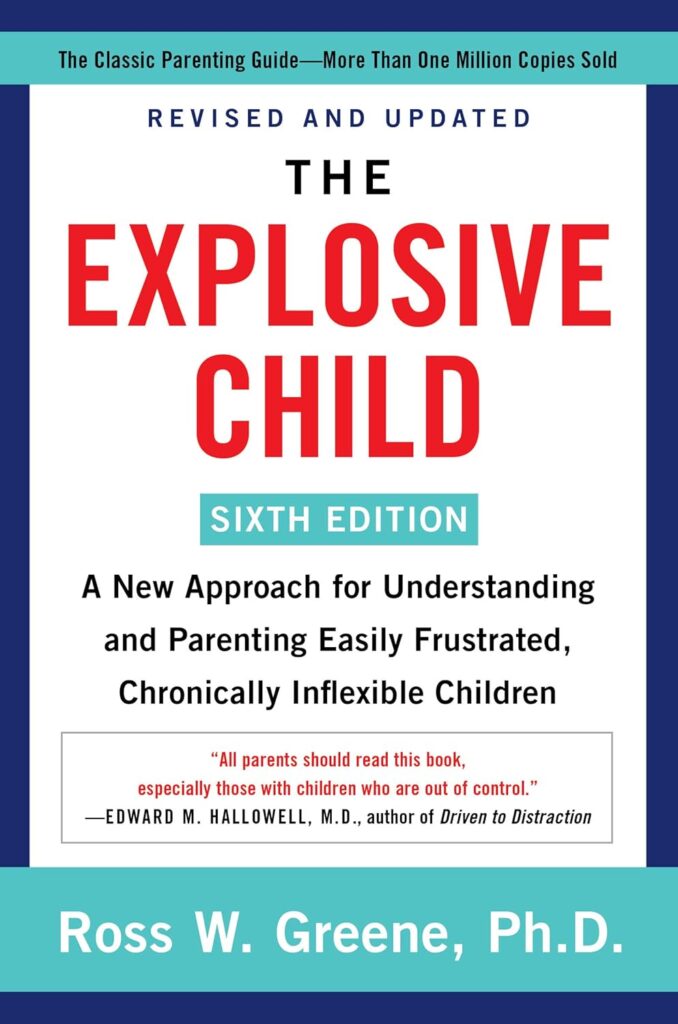
The Explosive Child
By: Ross Greene, PHD
Target Age Range: Designed for parents/caregivers of young people ages 4–14
Greene introduces a problem-solving framework that helps you work with your child to reduce meltdowns and power struggles. Its emphasis on lagging skills and collaborative conversations is especially helpful for persistent behavior challenges
Read First If… your child frequently explodes and you need a clear, step-by-step approach to reducing conflict through collaboration
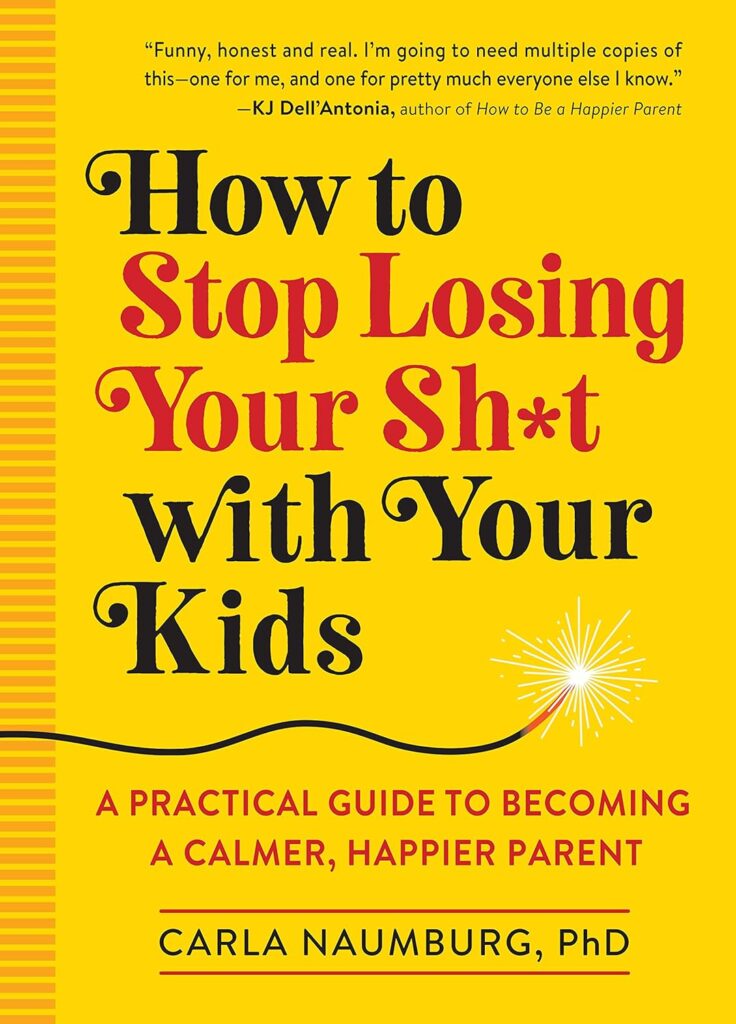
How to Stop Losing Your Sh*t With Your Kids
By: Carla Naumberg, PHD
Target Age Range: Broadly applicable; especially for parents/caregivers of young people ages 2-12
This honest, funny, and deeply compassionate book offers practical tools for parents who want to yell less and connect more. Naumburg blends humor, real-life stories, and research to help caregivers understand what triggers them, how to stay grounded in the moment, and why self-compassion is essential to staying calm. Rather than offering discipline strategies, this book is about helping you regulate so you can parent with clarity and intention — even in the messiest moments
Read First If… you find yourself snapping more than you’d like and want realistic, shame-free support for breaking the cycle — with strategies that actually work in real life
Connection-Based Parenting
Start Here If...
You’re trying to build a stronger, more secure relationship with your child — especially if traditional discipline strategies don’t feel like the right fit. This section is for caregivers who believe (or are starting to believe) that connection, not control, is the foundation of healthy development, emotional regulation, and long-term trust
What These Books Have In Common
These titles are rooted in the belief that children thrive in the context of safe, attuned relationships. They draw on relational neuroscience, attachment theory, and years of parenting experience to help caregivers shift from reactive parenting to relationship-centered responses. These books don’t just offer tools — they invite a change in how we see our role as caregivers, emphasizing empathy, presence, and emotional co-regulation.
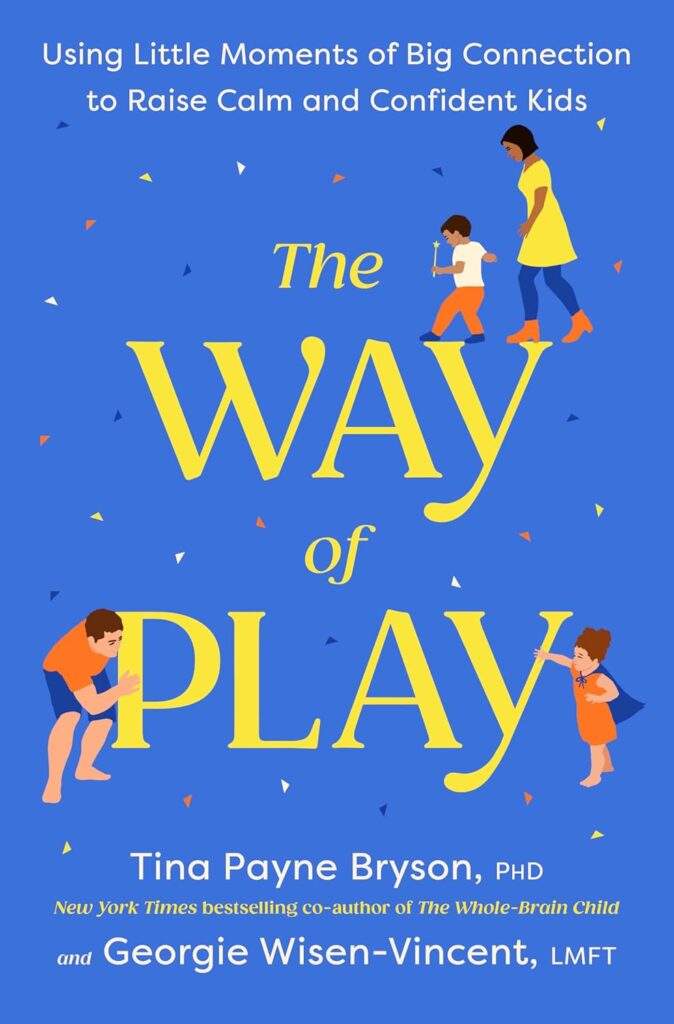
The Way of Play
By: Tina Payne Bryson, PHD
Target Age Range: Primarily for parents/caregivers of young people ages 3–12, but helpful for any caregiver seeking connection through play
This book explores how play — in its many forms — can be a powerful pathway to connection. Tina Payne Bryson encourages parents to be flexible, creative, and emotionally present, showing how even small moments of shared joy and imagination can foster secure attachment and regulation. It’s an invitation to lighten up, lean in, and meet your child where they are
Read First If… you’re feeling stuck in seriousness or discipline mode and want to rediscover joy and connection through everyday play
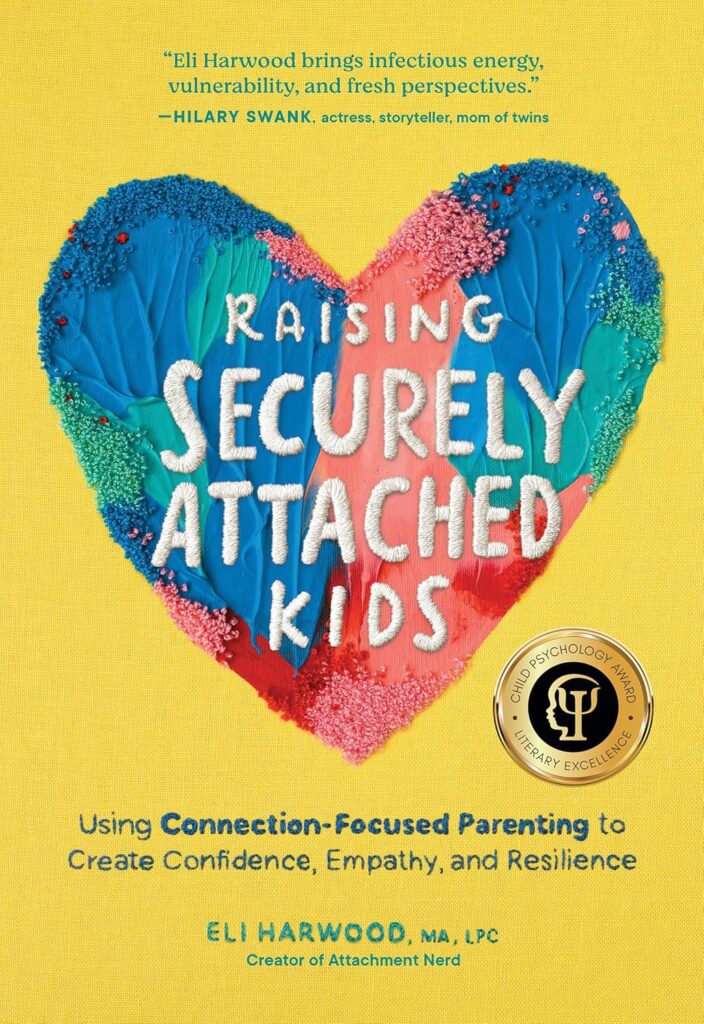
Raising Securely Attached Kids
By: Eli Harwood, MA, LPC
Target Age Range: Parents/caregivers of young people ages 0-10; especially useful for toddler and elementary years
This relatable guide offers a practical introduction to what secure attachment looks like in daily parenting. Eli Harwood (“Attachment Nerd”) explains the building blocks of secure relationships — safety, connection, emotional presence — and helps caregivers break generational cycles with humor, honesty, and grace
Read First If… you’re new to attachment theory or want a readable, encouraging guide to becoming the safe base your child needs
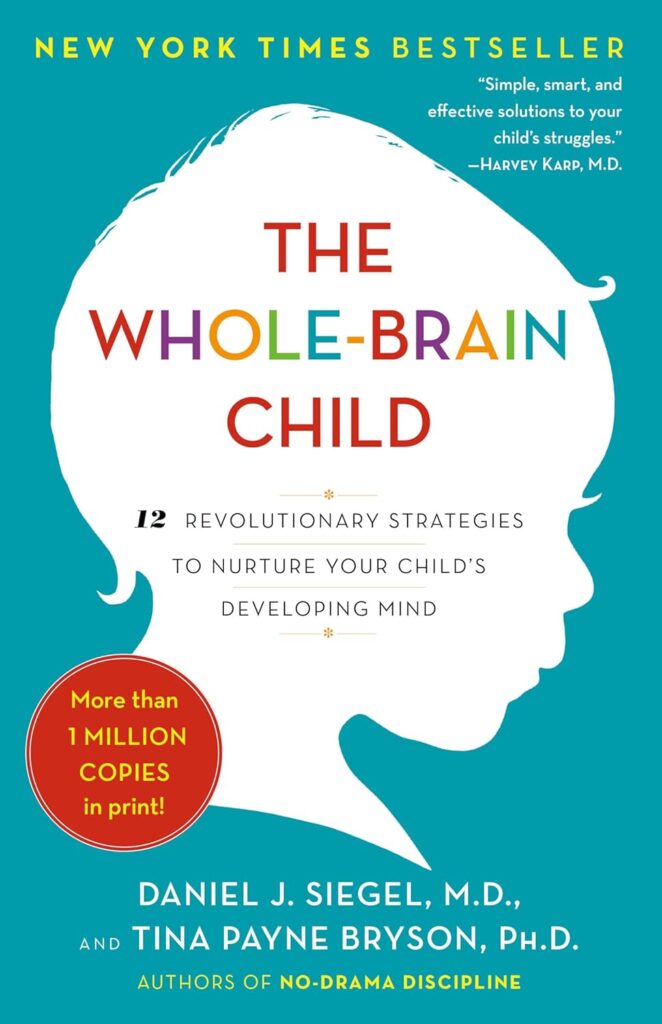
The Whole-Brain Child
By: Dan Siegel, MD and Tina Payne Bryson, PHD
Target Age: Parents/caregivers of young people ages 3–12 years
This bestselling book bridges brain science and parenting strategies. With simple metaphors like the “upstairs and downstairs brain,” it helps caregivers understand their child’s development and use that knowledge to respond to big emotions and teach emotional regulation
Read First If… you want to understand what’s going on in your child’s brain — and how to respond in ways that support integration, resilience, and regulation
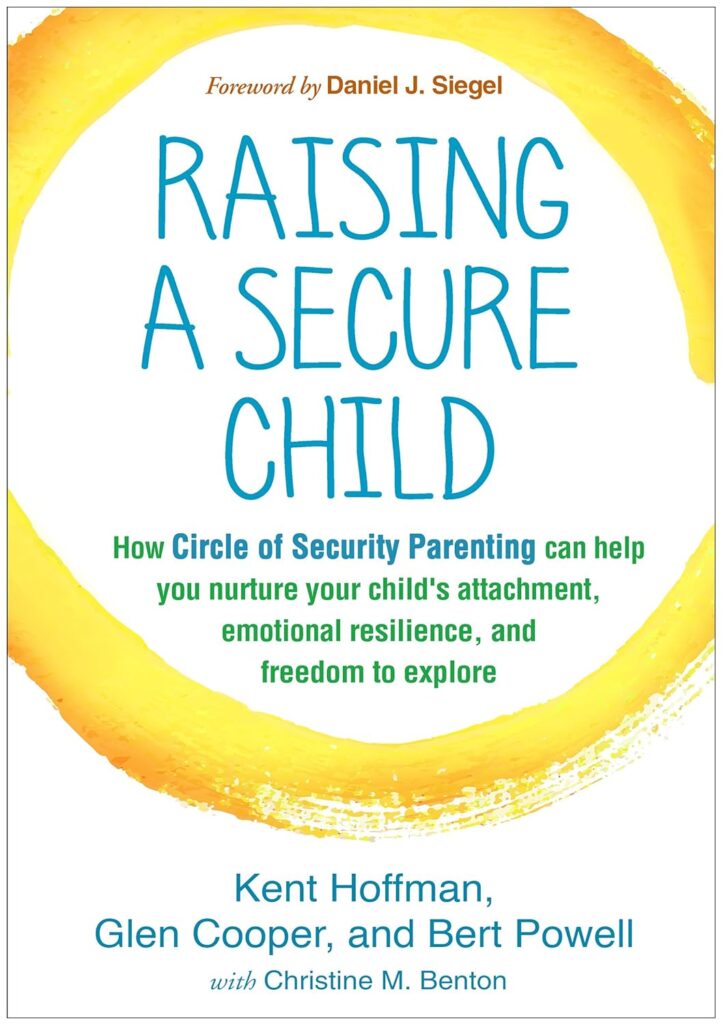
Raising A Secure Child
By: Kent Hoffman, Glen Cooper, and Bert Powell
Target Age Range: Parents/caregivers of young people ages 0-8; especially strong for infants, toddlers, and preschoolers
This book is rooted in the Circle of Security model — a framework for understanding your child’s emotional needs. It teaches caregivers how to be a secure base, interpret children’s behavior through an attachment lens, and respond with empathy, even when emotions run high. It’s thoughtful, research-based, and full of practical insights
Read First If… you’re drawn to a deeper dive into attachment theory and want to transform your relationship with your child by understanding their emotional needs more clearly
Tween & Teen Mental Health
Start Here If...
You’re parenting a child between ages 10–18 and feel like everything is changing — their moods, their needs, and your relationship. This section is for caregivers trying to stay connected and supportive through the challenges of adolescence, while also helping their tween or teen build confidence, emotional resilience, and a sense of identity
What These Books Have In Common
Adolescence is a time of massive growth — not just physically, but emotionally, socially, and neurologically. These books help caregivers understand what’s happening beneath the surface during these years and how to stay in relationship with their child, even when things get tense or confusing. Together, they offer a blend of insight, practical advice, and encouragement for walking alongside your tween or teen with presence and purpose
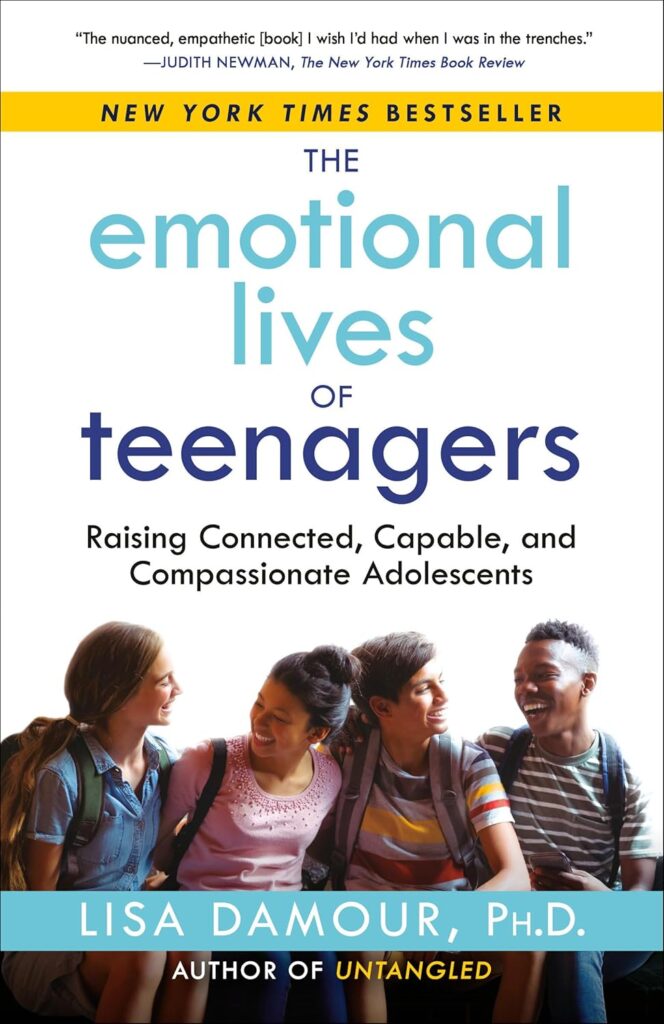
The Emotional Lives of Teenagers
By: Lisa Damour, PHD
Target Age Range: Parents/caregivers of young people ages 12-18
This book normalizes the emotional intensity of adolescence and helps parents support their teen through it. Damour explains what’s typical, what’s concerning, and how to respond in ways that preserve trust without minimizing emotions. It’s compassionate, grounded, and refreshingly practical
Read First If… you’re worried about your teen’s moods, anxiety, or emotional ups and downs — and want to support them without overreacting or checking out

Brainstorm: The Power and Purpose of the Teenage Brain
By: Dan SIegel, MD
Target Age Range: Adolescents ages 12-24 and their parents/caregivers
This book explains the science of the adolescent brain — and why it drives risk-taking, emotional swings, and a hunger for independence. Siegel reframes this developmental period as full of opportunity, not just danger, and helps parents better support their teen’s individuation while maintaining connection
Read First If… you’re looking for a deeper understanding of your teen’s behavior and want to approach adolescence with less fear and more curiosity
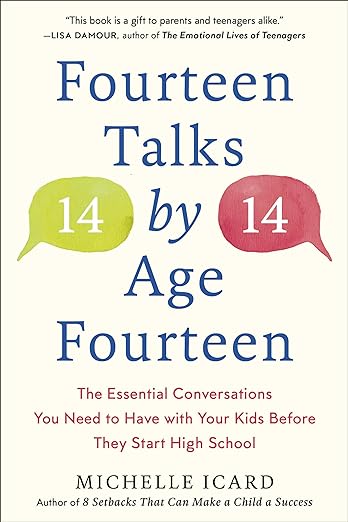
Fourteen Talks by Age Fourteen
By: Michelle Icard
Target Age Range: Parents/caregivers of young people ages 10–14; essential reading for middle school caregivers
This book gives caregivers a roadmap for initiating key conversations with their kids before high school. Topics range from friendship and body image to tech use and difficult emotions — all delivered in an approachable, empowering tone. It’s a confidence-builder for parents who aren’t sure how to bring things up
Read First If… you want clear guidance on what to talk about (and how) before your child enters the teen years — even if those conversations feel awkward or tricky
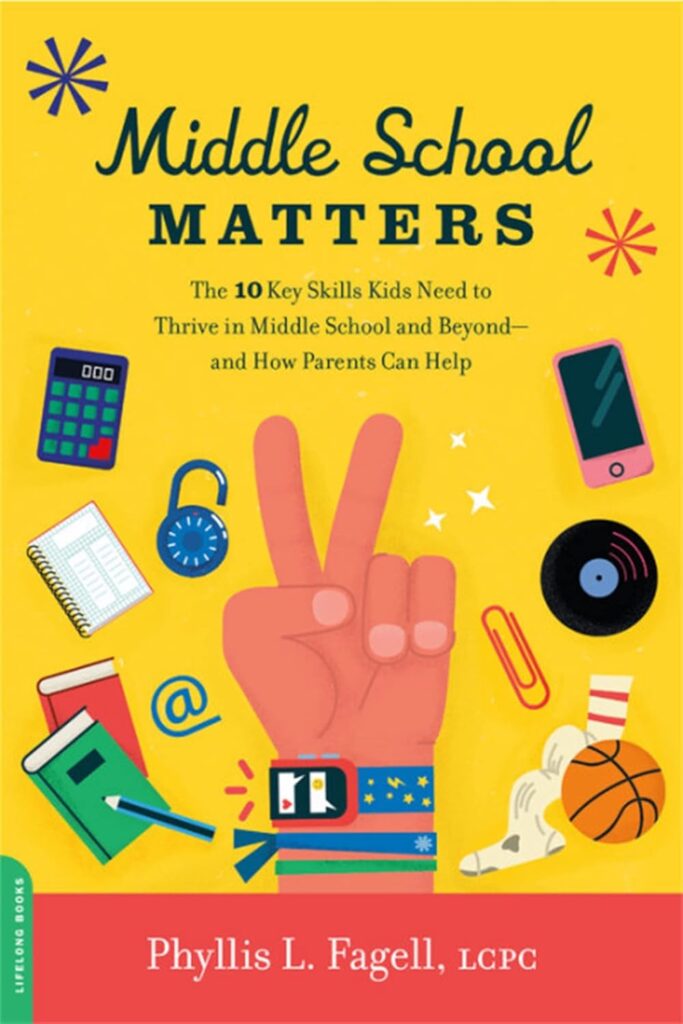
Middle School Matters
By: Phyllis Fagell, LCPC
Target Age Range: Parents/caregivers of young people ages 10-14
This book focuses on the academic, emotional, and social skills tweens and teens need to succeed in middle school — and how caregivers can support them. From managing friendships to building resilience, Fagell offers a practical, strengths-based guide rooted in her work as a school counselor
Read First If… your child is entering or currently in middle school, and you want strategies to help them (and you) feel more prepared and confident
Anxiety & OCD
Start Here If...
Your child is stuck in patterns of worry, avoidance, or reassurance-seeking — or if everyday situations seem to cause outsized fear, panic, or distress. Whether your child is dealing with general anxiety, social fears, phobias, or OCD symptoms, this section is for caregivers who want to respond with clarity, confidence, and compassion. These books will help you understand how anxiety works, why it persists, and what you can do to support your child in facing fears and building resilience — without getting stuck in power struggles or over-accommodation
What These Books Have In Common
These books all begin with the same essential truth: anxiety is not a sign of weakness or defiance — it’s a protective response that has gotten stuck. Rather than focusing on eliminating fear, these authors help caregivers understand how anxiety operates, why avoidance and reassurance tend to make it worse, and what actually helps children move through it. Whether you’re shifting your parenting approach, learning developmentally appropriate strategies, or following a step-by-step plan, these books will equip you to support your child with greater confidence, calm, and long-term effectiveness
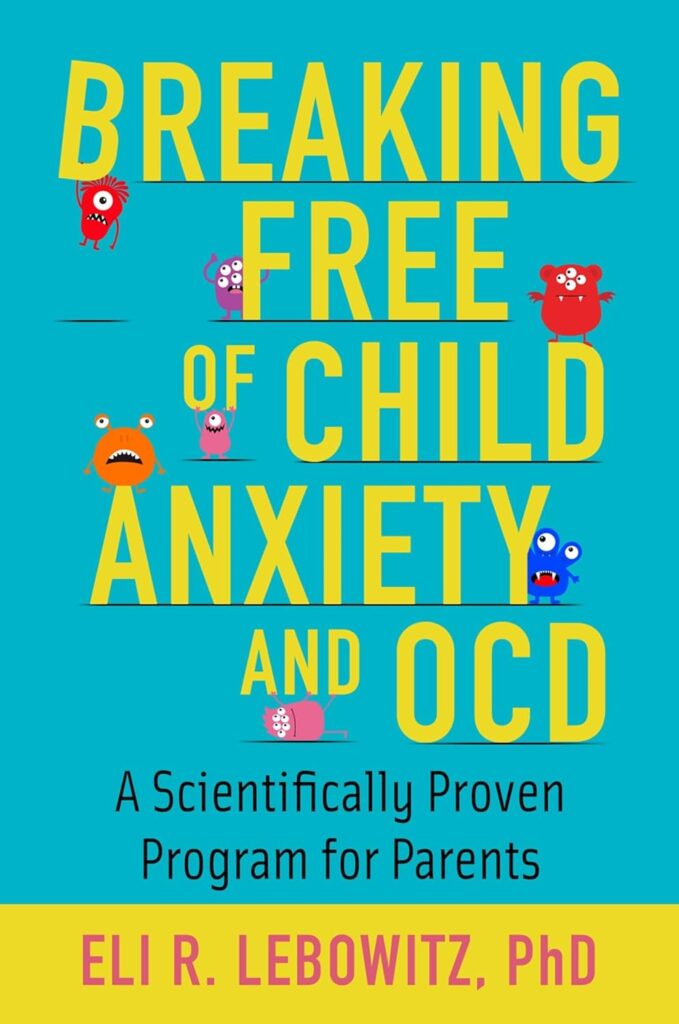
Breaking Free of Child Anxiety and OCD
By: Eli R. Lebowitz, PHD
Target Age Range: Parents/caregivers of young people ages 5–17; especially effective for caregivers of kids and teens who resist therapy or need parent-led support
This book introduces the SPACE program (Supportive Parenting for Anxious Childhood Emotions), a groundbreaking parent-based treatment for anxiety and OCD. Instead of trying to get your child to change, you’ll learn how to change your own responses — reducing accommodations, setting supportive boundaries, and fostering confidence
Read First If… your child refuses therapy, is stuck in rigid anxiety patterns, or you’re wondering how to help without making things worse
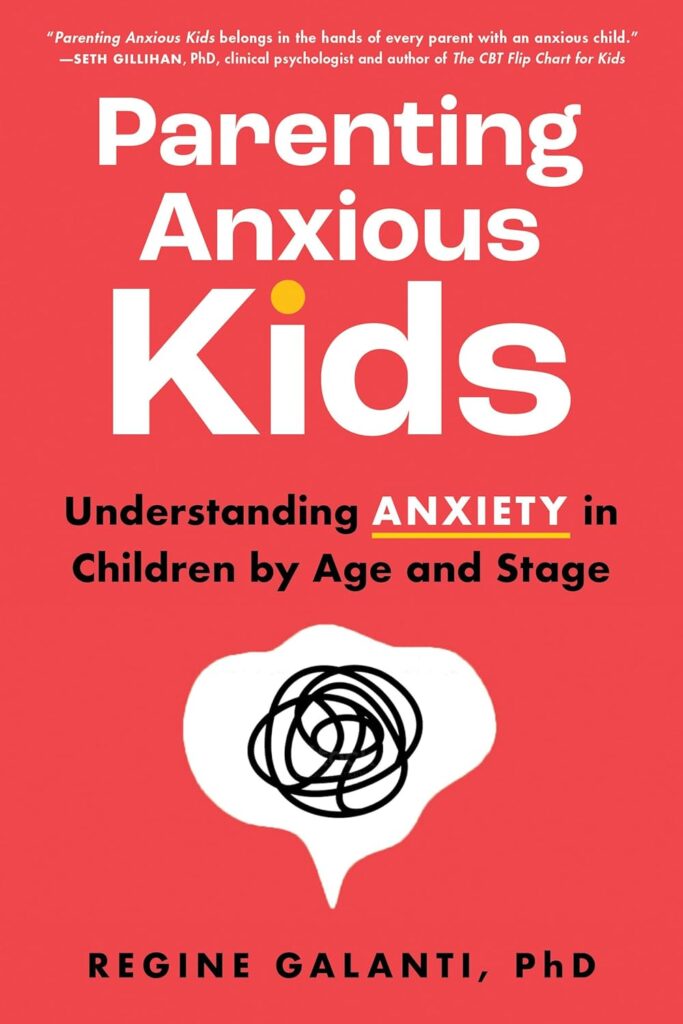
Parenting Anxious Kids
By: Regine Galanti, PHD
Target Age Range: Parents/caregivers of young people ages 2–18; especially helpful for caregivers of toddlers through middle schoolers
This book offers a compassionate, developmentally specific look at how anxiety shows up across childhood. Galanti breaks down common anxiety themes by age and gives caregivers tools for responding in age-appropriate, emotionally supportive ways — from preschool fears to tween avoidance
Read First If… you’re unsure how anxiety “looks” at your child’s age or want specific language and strategies that grow with your child
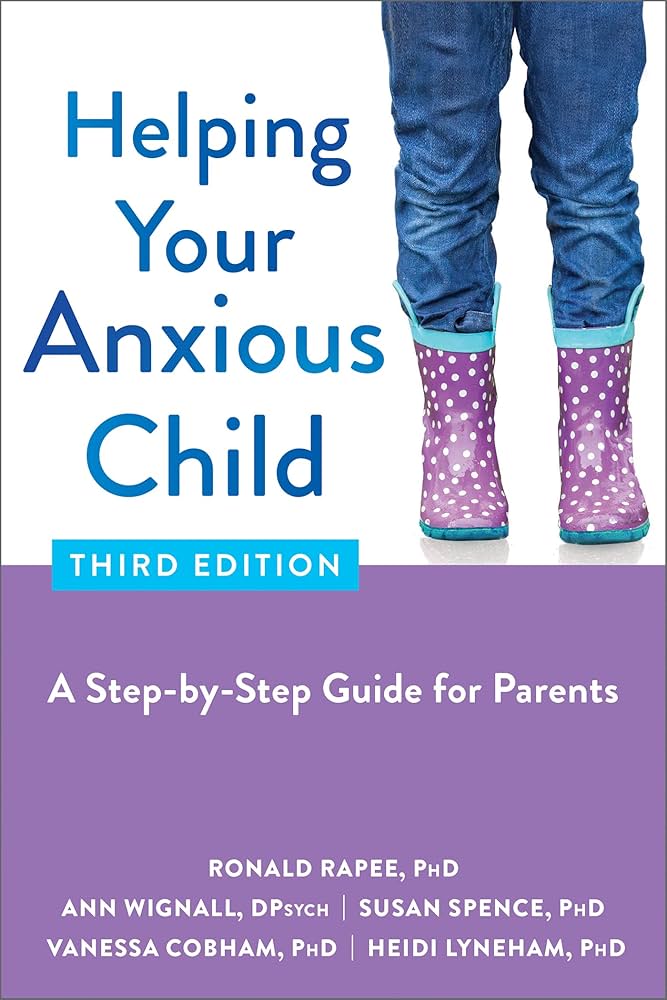
Helping Your Anxious Child
By: ronald rapee, PHD
Target Age Range: Parents/caregivers of young people ages 6-12
This evidence-based workbook gives parents a clear path to help their child overcome anxiety using CBT techniques.With practical steps and structured activities, it’s ideal for caregivers who want to be active participants in helping their child build coping skills, face fears gradually, and reduce avoidance
Read First If… you’re looking for a clear, step-by-step plan to coach your child through anxiety using proven tools you can implement at home
Neurodivergence - ADHD
Start Here If...
your child has a fast-moving brain and body, struggles with focus, impulsivity, or regulation, and often hears that they’re “too much” or “not trying hard enough.” This section is for caregivers who want to better understand ADHD as a different — not deficient — way of experiencing the world. These books offer guidance that supports your child’s strengths, meets their challenges with compassion, and helps you build a more connected, respectful relationship.
What These Books Have In Common
These books reject outdated views of ADHD as simply a discipline or motivation problem. Instead, they affirm that ADHD is a neurodevelopmental difference — one that affects how children process information, regulate emotions, and interact with their environments. Whether you’re parenting a child with classic hyperactivity, quiet inattentiveness, or overlapping challenges like anxiety or executive dysfunction, these authors help you support your child without shame. You’ll find strategies for co-regulation, skill-building, and advocacy — all grounded in trust, flexibility, and connection
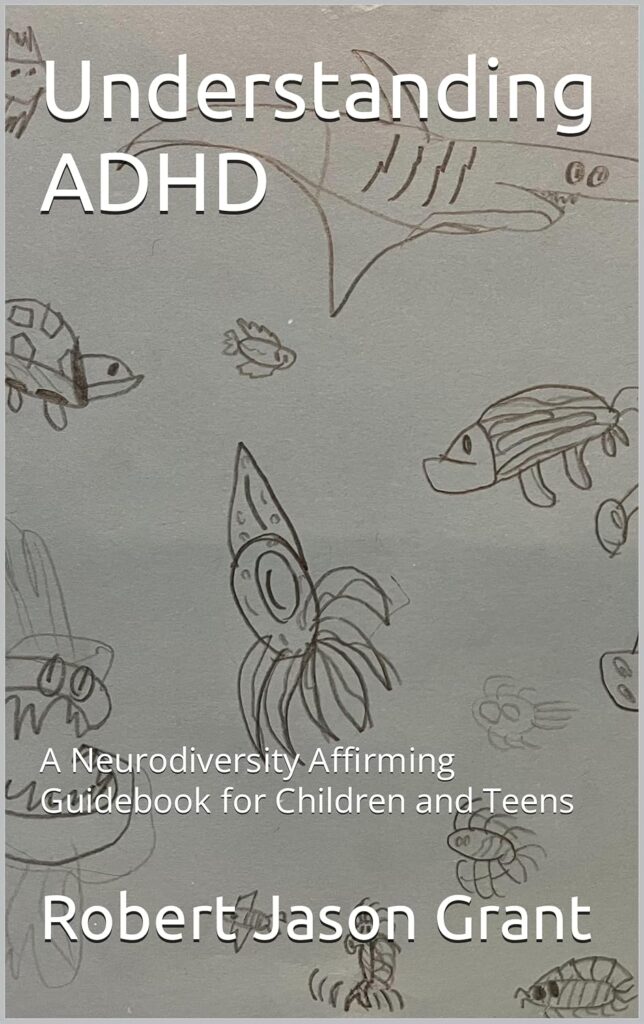
Understanding ADHD
By: Robert Jason Grant, PhD
Target Age Range: Parents/caregivers of young people ages 6–18; also designed for tweens and teens to understand
This affirming, kid-friendly guide helps children and teens make sense of their ADHD in a way that builds pride and understanding. Using accessible language, illustrations, and interactive elements, it offers a framework that validates kids’ experiences while promoting self-awareness, emotional expression, and a positive identity
Read First If… you want to help your child understand their brain in a strengths-based way — and give them language to talk about who they are with confidence
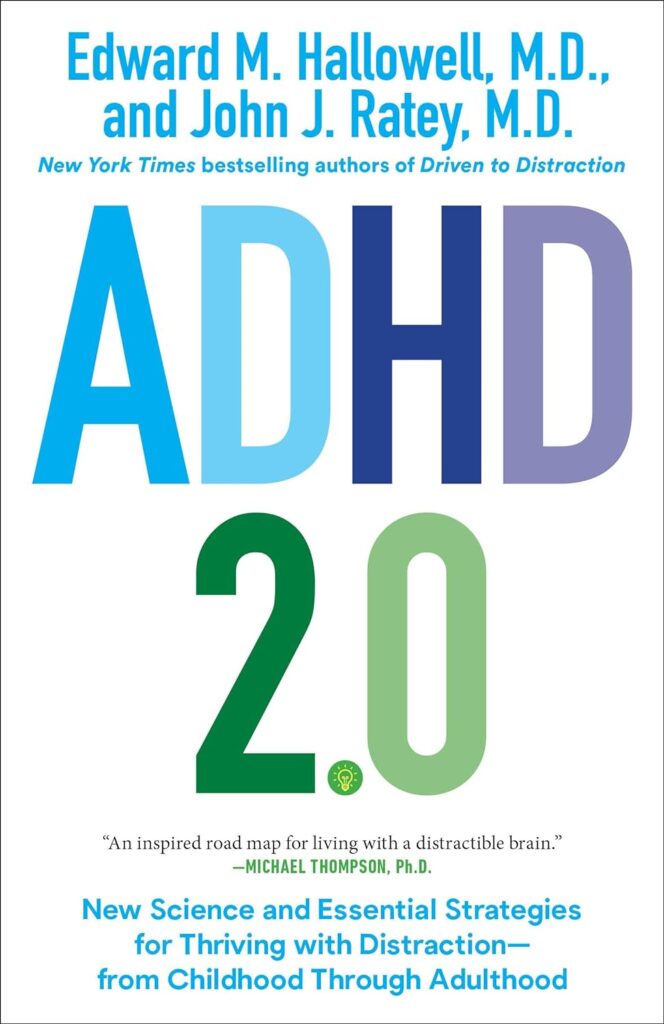
ADHD 2.0
By: edward m. hallowell, md ANd John J. Ratey, Md
Target Age Range: Parents/caregivers of people ages 12–adult; ideal for parents of teens and for caregivers discovering ADHD in themselves
This book redefines ADHD as a trait-based difference — one that comes with real challenges, but also deep strengths and creative potential. Hallowell and Ratey explain how the ADHD brain works, why traditional strategies often fall flat, and how to support thriving with empathy, flexibility, and realistic tools
Read First If… you’re parenting a teen with ADHD or exploring your own neurodivergence — and want a hopeful, big-picture perspective grounded in science and lived experience
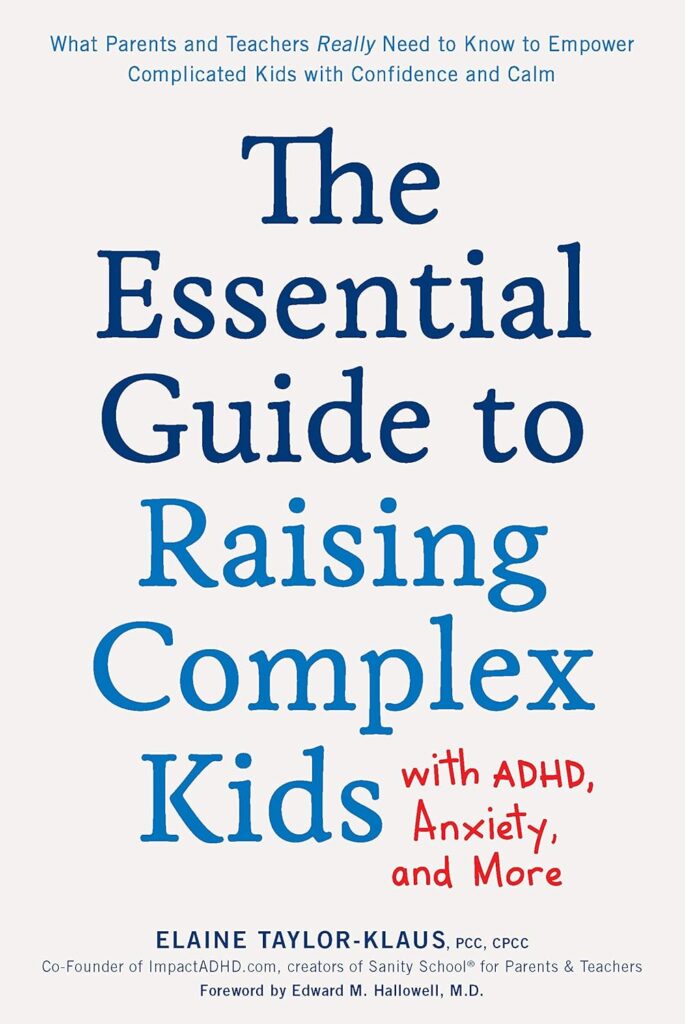
The Essential Guide to Raising Complex Kids with ADHD, Anxiety, and More
By: ELaine Taylor-Klaus, PCC, CPCC
Target Age Range: Parents/caregivers of young people ages 6–16; for families navigating ADHD with co-occurring needs like anxiety, sensory processing, or learning differences
This book is for caregivers who feel like “nothing typical works” — and are ready for a more collaborative, respectful approach. Taylor-Klaus combines coaching tools with deep validation, helping you shift from constant correction to calm connection. It’s full of language that empowers kids and supports caregivers without blame, especially when parenting feels heavy or isolating
Read First If… you’re raising a child with multiple layers of need and want a guide that honors both your child’s neurodivergence and your parenting journey
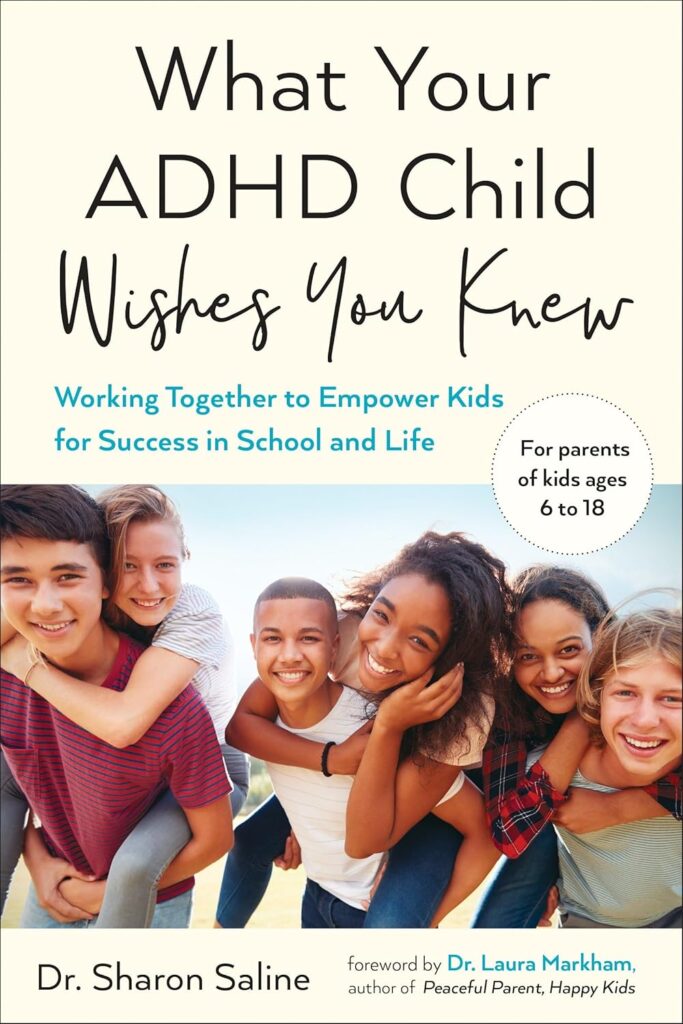
What Your ADHD Child Wishes You Knew
By: Sharon Saline, PsyD
Target Age Range: Parents/caregivers of young people ages 6–18
This book offers a compassionate, collaborative approach to parenting kids with ADHD, rooted in deep listening and mutual respect. Drawing from her clinical work and interviews with children and teens, Saline shares five key “C”s—self-control, compassion, collaboration, consistency, and celebration—that help caregivers support their child’s executive functioning, emotional regulation, and self-esteem.
Read First If… you want to better understand your child’s inner experience and learn how to work with them—not just around their ADHD—in a way that builds trust, motivation, and connection
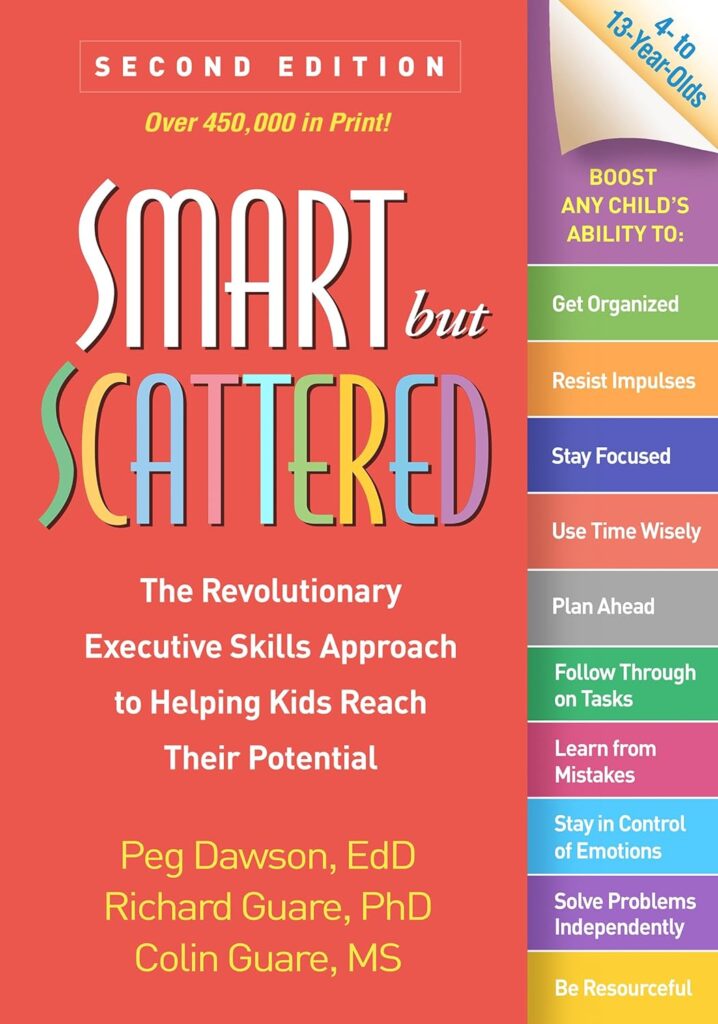
Smart But Scattered
By: Peg Dawson, Edd, Richard Guare, phd, and Colin Guare, MS
Target Age Range: Parents/caregivers of young people ages 4-13
This practical, research-backed book focuses on helping kids build the executive functioning skills they need to succeed — like organization, impulse control, task initiation, and emotional regulation. Dawson and Guare help caregivers identify their child’s strengths and challenges, then offer specific, step-by-step strategies to support growth without shame or punishment
Read First If… your child struggles with skills like focus, follow-through, or frustration tolerance, and you’re looking for concrete tools to build these skills in everyday routines — especially if ADHD or executive function challenges are part of the picture
Neurodivergence - Autism
Start Here If...
Your child has recently been identified as autistic, or if you’ve long sensed they experience the world differently and want to better understand how to support them. This section is for caregivers who want to move beyond outdated myths about autism and toward a deeper, more respectful understanding of who their child is — and how to honor their needs, communication style, and identity with confidence and compassion
What These Books Have In Common
These books share a core message: autism is not something to fix or cure — it’s a valid and valuable way of being. They offer support without shame, guidance without pathologizing, and insight rooted in both research and lived experience. Whether you’re new to autism or seeking to unlearn deficit-based approaches, these titles will help you parent in a way that celebrates your child’s strengths, respects their differences, and builds authentic connection. You’ll find tools for advocacy, co-regulation, and relationship — always centered around seeing and supporting your child for who they truly are
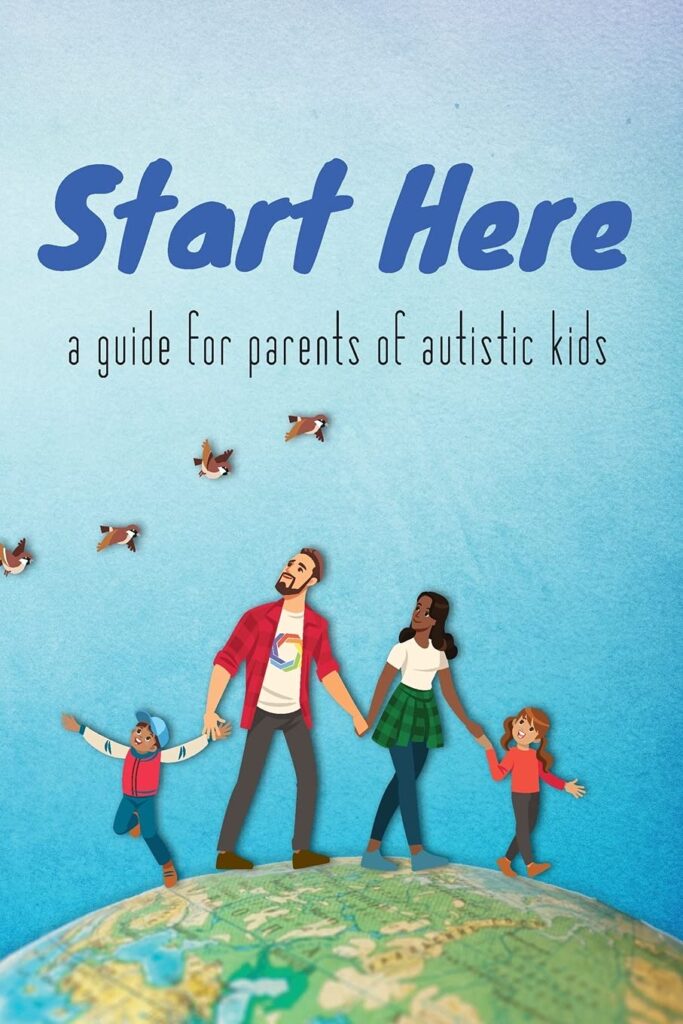
Start Here: A Guide for Parents of Autistic Kids
By: the Autistic Self advocacy network
Target Age Range: Parents/caregivers of young people ages 3-12; ideal as a starting point post-diagnosis or self-identification
This compassionate, clear guide is designed to meet caregivers where they are — often at the beginning of their autism journey. Created by autistic adults, it challenges ableist assumptions and helps parents support their child in affirming, respectful, and practical ways
Read First If… your child was recently diagnosed or you’re looking for a foundational, values-aligned introduction that centers autistic voices from the start
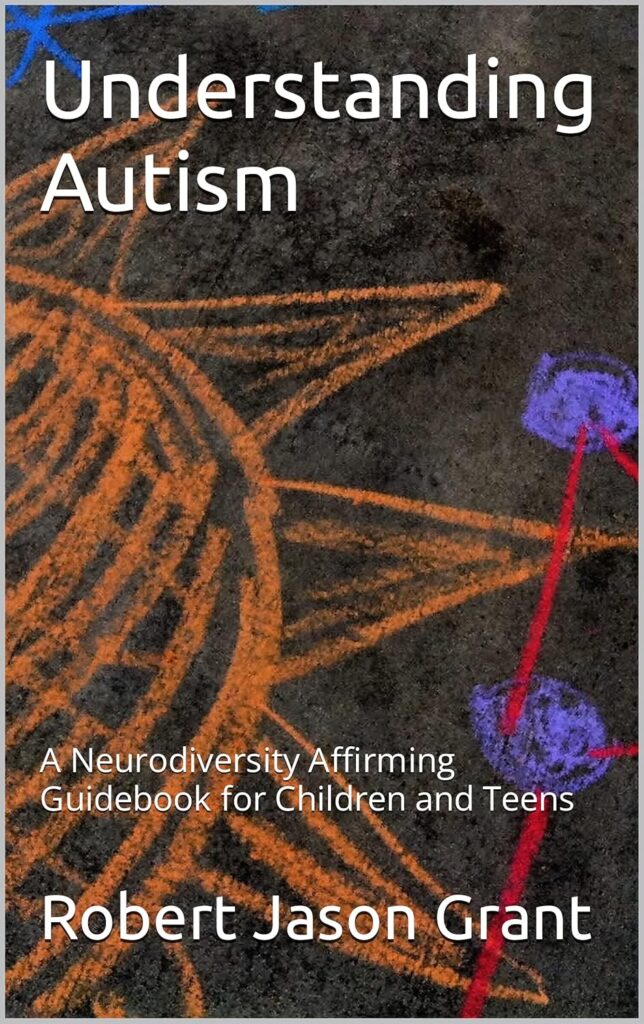
Understanding Autism
By: RObert Jason Grant, PhD
Target Age Range: Parents/caregivers of young people ages 6–18; also designed for tweens and teens to understand
This illustrated, kid-friendly guide explains autism in accessible and affirming language. It helps autistic youth (and their caregivers) make sense of sensory differences, communication styles, and emotional regulation — all while promoting self-understanding and pride
Read First If… you want a gentle, empowering way to help your child understand their brain and identity — or if you’re learning alongside them
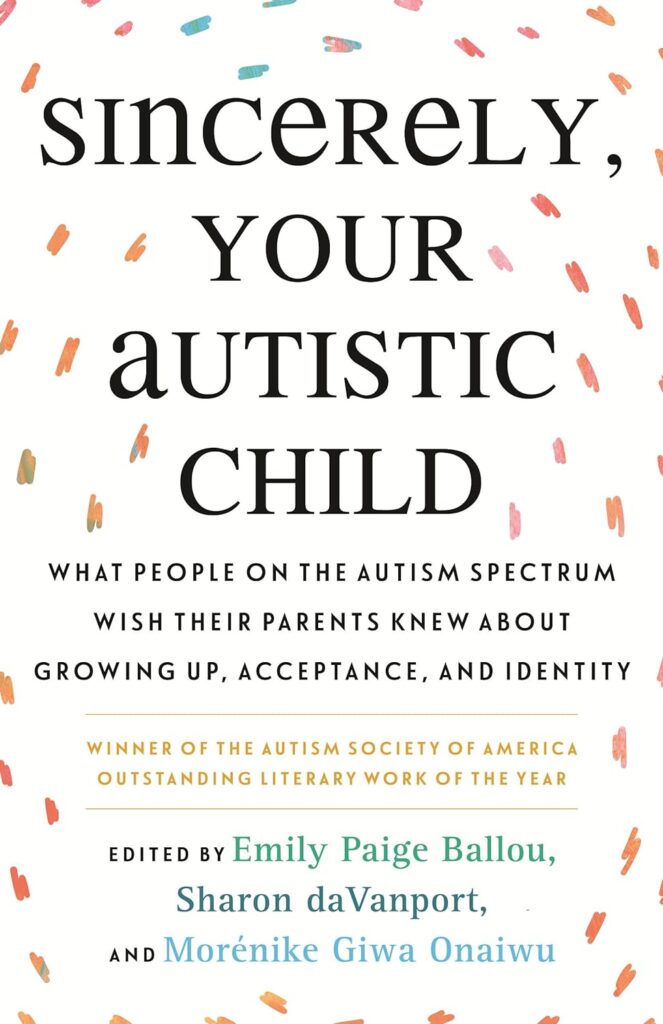
Sincerely, Your Autistic Child
By: Autistic women & Nonbinary network
Target Age Range: Parents/caregivers of young people of all ages; especially helpful for parents of older children and teens
This book is a collection of essays written by autistic adults reflecting on their childhood experiences and what they wish their parents had understood. It offers a powerful window into the inner world of autistic youth and challenges readers to shift from “fixing” to honoring and accepting
Read First If… you want honest, heartfelt insight directly from autistic voices — and are open to hearing how well-meaning approaches sometimes miss the mark
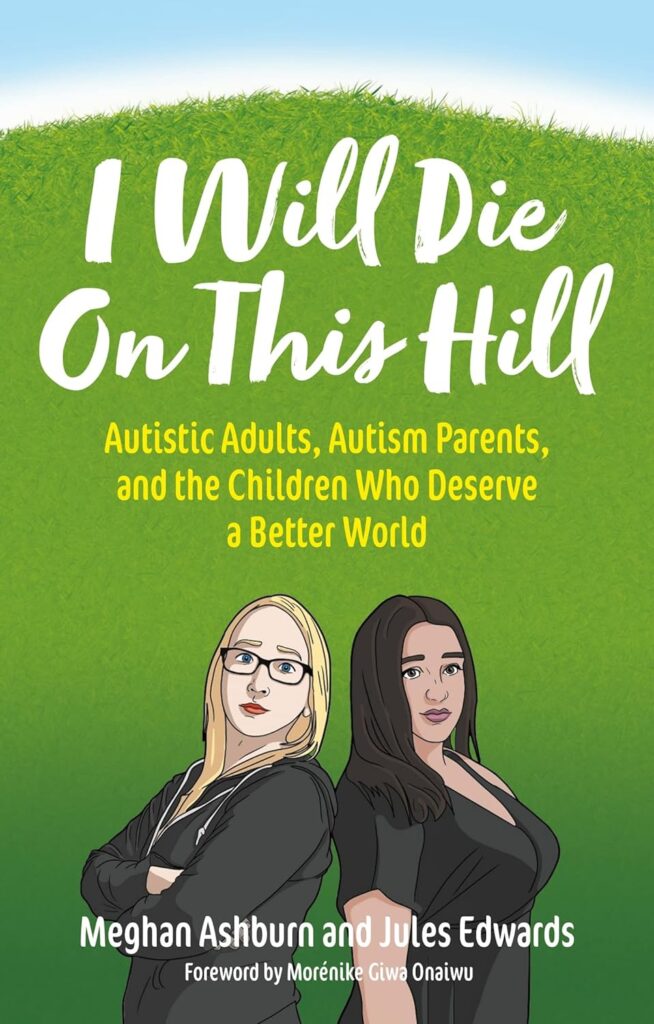
I Will Die on This Hill
By: Meghan Ashburn and Jules Edwards
Target Age Range: Parents/caregivers of young people of all ages, especially those navigating diagnosis, services, and identity
Written by one autistic adult and one non-autistic parent, this book bridges the gap between two perspectives that often clash — autistic adults and autism parents. It addresses difficult topics like grief, advocacy, burnout, and ableism with nuance, humility, and clarity
Read First If… you’re feeling overwhelmed, uncertain, or isolated — and want to reframe your role as an advocate, co-regulator, and trusted partner in your child’s life
Divorce & Co-Parenting
Start Here If...
Your family is going through a separation or divorce, and you want to help your child feel safe, secure, and supported through the changes ahead. Whether you’re navigating the early stages of a breakup or trying to co-parent across two homes, this section is for caregivers who want to prioritize their child’s emotional wellbeing while learning how to communicate, plan, and parent with greater clarity and care — even when things feel complicated
What These Books Have In Common
These books offer more than just co-parenting tips — they guide you in supporting your child’s sense of safety and stability during a time of uncertainty. Grounded in child development, emotional regulation, and respectful communication, each title provides practical tools and guidance for parenting across two homes. Whether you’re trying to reduce conflict, navigating tough transitions, or building a new co-parenting structure, these books keep your child’s needs at the center while offering hope, clarity, and connection for you, too
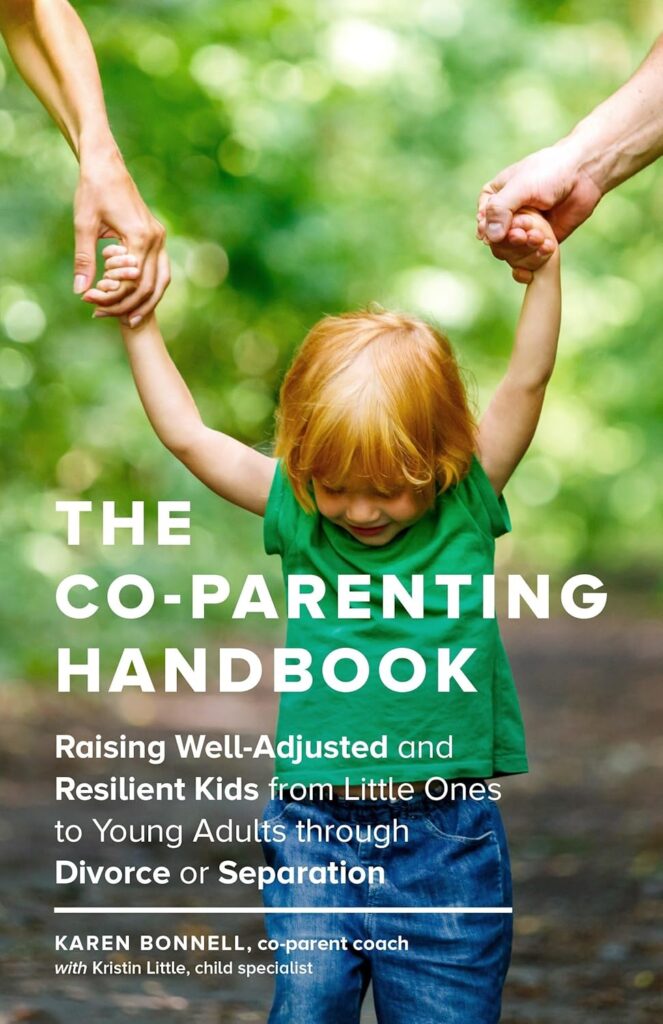
The Co-Parenting Handbook
By: Karen Bonnell
Target Age Range: Parents/caregivers of young people ages 2–18
This compassionate, practical guide walks caregivers through the emotional and logistical shifts of parenting across two homes. Bonnell offers language, frameworks, and checklists to help parents reduce conflict, build stability, and make decisions that center children’s emotional needs — not adult grievances. Grounded in attachment and relational neuroscience, this book is especially helpful in the early stages of separation when emotions are raw and kids need safety above all. Best recommendation for high-conflict situations
Read First If… you’re navigating a recent separation and want guidance for creating a co-parenting plan that’s calm, child-centered, and emotionally grounded — even if things feel complicated
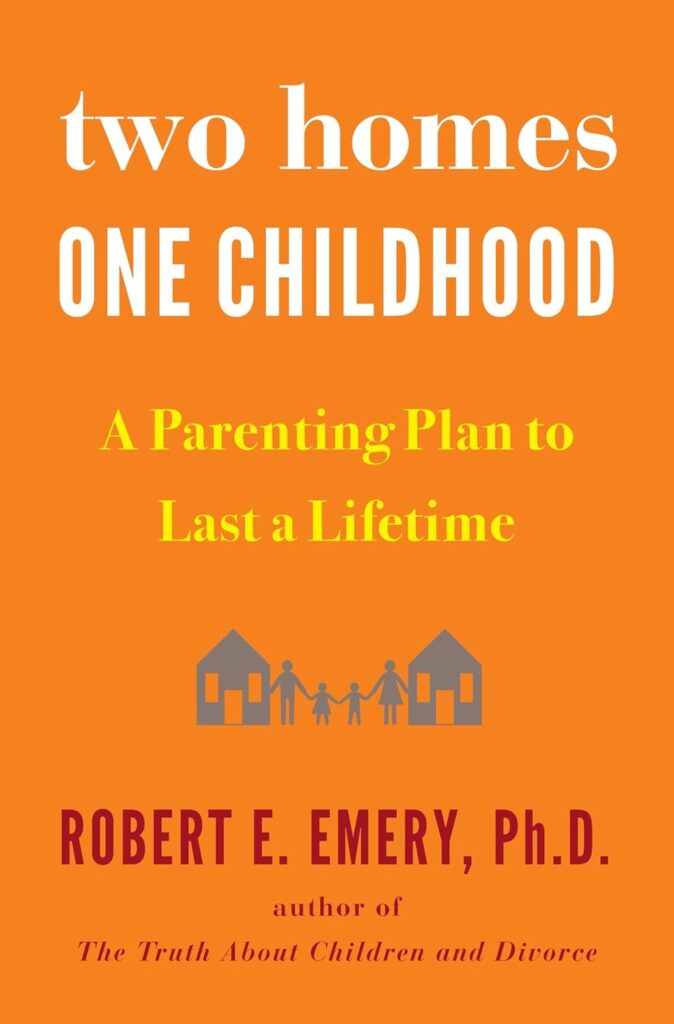
Two Homes One Childhood
By: Robert E. Emery, PHD
Target Age Range: Parents/caregivers of young people ages 2–18
This book offers a wise, long-term perspective on what it means to co-parent across childhood and adolescence. Emery blends psychological insight with practical advice, encouraging parents to make flexible, developmentally informed decisions as their children grow. Rather than offering a rigid parenting plan, he helps families design evolving plans that reflect a child’s changing needs — emotionally, relationally, and logistically.
Read First If… you’re ready to move beyond the immediate crisis of divorce and want a bigger-picture guide for supporting your child at every age and stage, from preschool to young adulthood
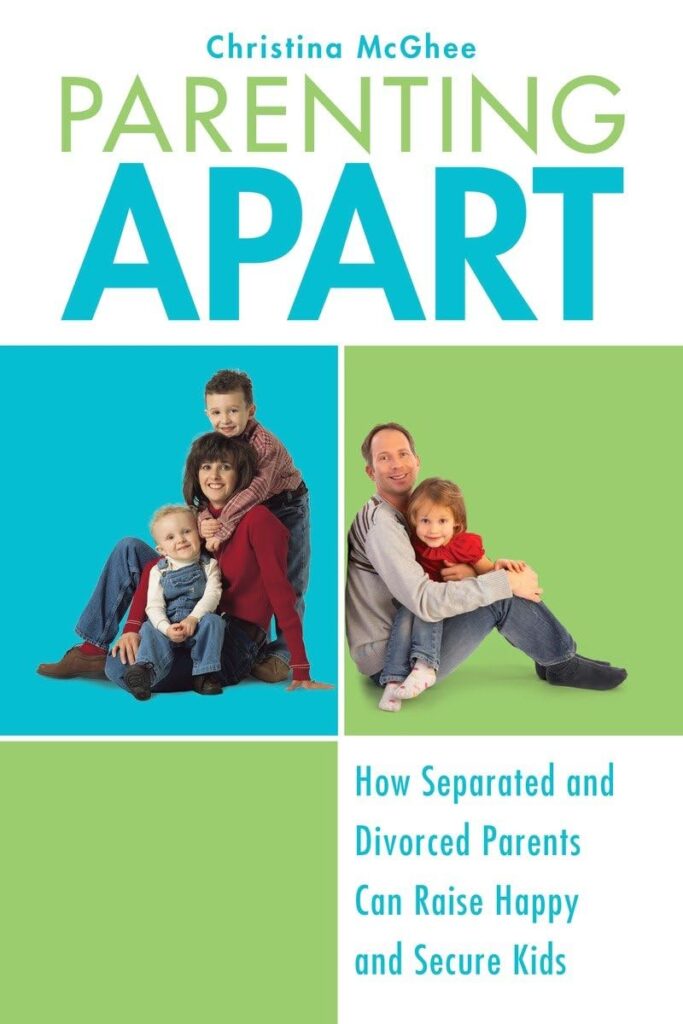
Parenting Apart
By: Christina McGhee
Target Age Range: Parents/caregivers of young people ages 2–12
This accessible, scenario-based guide provides real-world scripts and strategies for handling day-to-day parenting challenges after separation. McGhee covers transitions between households, school communication, bedtime routines, and tough questions — all through a lens of emotional attunement and regulation. Her tone is warm, practical, and direct, making this book especially helpful for overwhelmed parents who want concrete support right away
Read First If… you’re in the thick of parenting young kids after a separation and need day-to-day tools, language, and structure to support your child’s sense of safety and stability
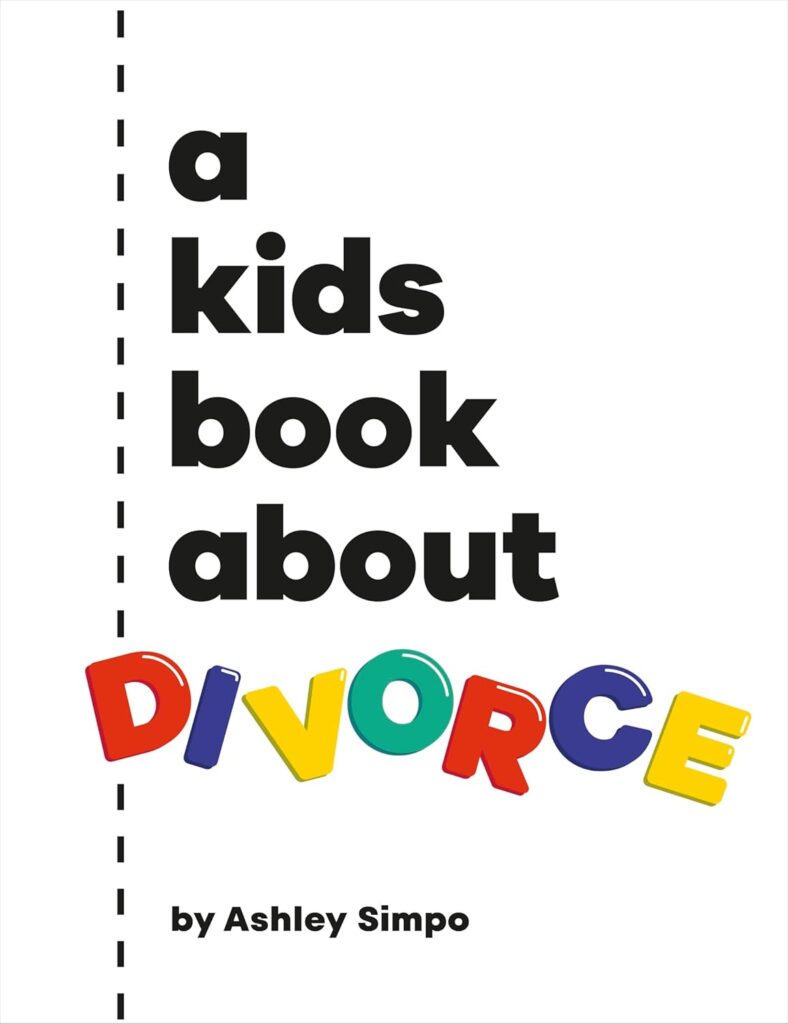
A Kids Book About Divorce
By: Ashley Simpo
Target Age Range: 6-12 and their parents/caregivers
This honest, affirming book speaks directly to kids about what divorce is, why it happens, and how it might feel — without blame or shame. With simple language and a calm, compassionate tone, it reassures children that the separation isn’t their fault, that it’s okay to have big feelings, and that both parents can still love them deeply. Part of the A Kids Book Aboutseries, it’s ideal for opening up safe, ongoing conversations about a tough topic
Read First If… your child is asking questions about why their family is changing, and you want a clear, validating way to help them make sense of divorce while reinforcing that they are safe and loved
Grief & Loss
Start Here If...
Your child is grieving the loss of someone or something important — a family member, friend, pet, or even a familiar routine or home — and you want to help them process their feelings in a safe, loving, and age-appropriate way. This section is for caregivers navigating conversations about death, memory, and change, whether the loss was recent or long ago, sudden or anticipated
What These Books Have In Common
These books offer gentle, honest language for talking about death and loss with children. Some are simple and soothing, others more reflective — but all of them acknowledge that grief is real, personal, and never too big for a caring adult to hold alongside a child. They don’t rush children through their feelings or tie things up with easy answers. Instead, they invite connection, emotional expression, and remembrance — often through metaphors, memory-keeping, and the reassurance that love lasts even after goodbye

When Grief Comes Home
By: Erin Leigh Nelson and Colleen E. Montague, LMFT
Target Age Range: parents/caregivers of young people ages 3-18
This gentle, emotionally attuned guide helps caregivers navigate their own grief while supporting a grieving child. Blending clinical insight with lived experience, the authors offer developmentally appropriate language, practical tools, and reflective prompts to foster connection, memory-making, and healing. Each chapter ends with a short blessing — not religious, but intentionally comforting — inviting moments of pause and presence amid pain
Read First If… you’re grieving a loss alongside your child and want a compassionate, well-paced guide that helps you support their healing without ignoring your own
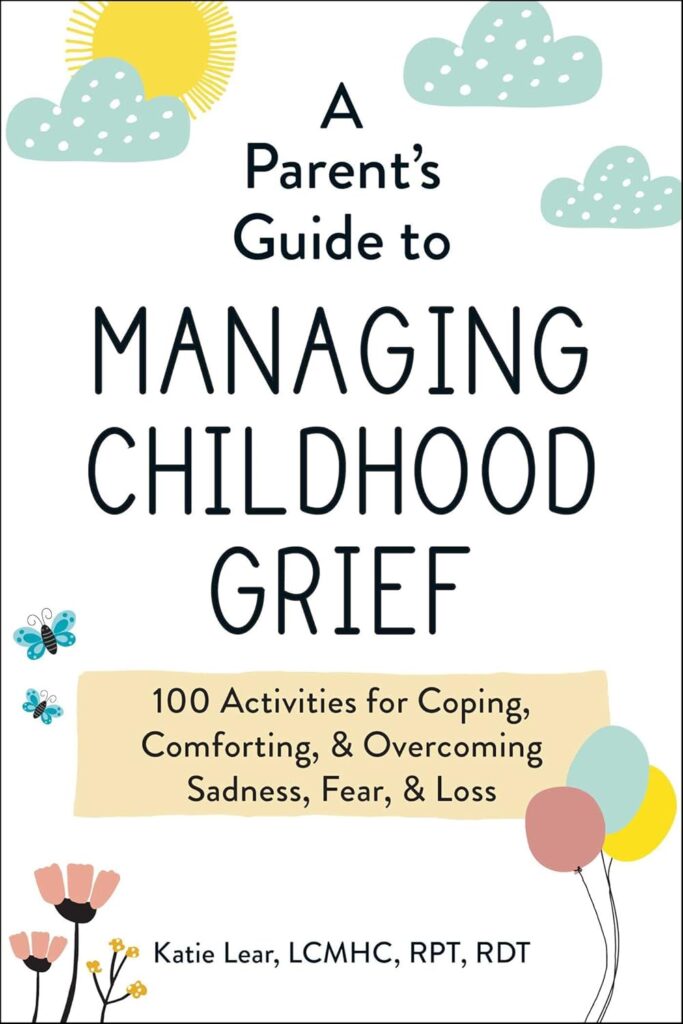
A Parent's Guide to Managing Childhood Grief
By: Katie Lear, LCMHC, RPT, RDT
Target Age Range: parents/caregivers of young people ages 4-12
This accessible and activity-rich guide offers 100 creative, developmentally informed tools for helping children process grief. From expressive arts and play-based techniques to memory-building and emotional regulation strategies, Lear equips caregivers with concrete ways to show up for a grieving child. Rooted in trauma-informed principles and play therapy, the book emphasizes presence over perfection and gives families flexible entry points for healing
Read First If… you’re supporting a grieving child and want hands-on tools that meet them where they are — especially if traditional talk-based approaches feel overwhelming or out of reach
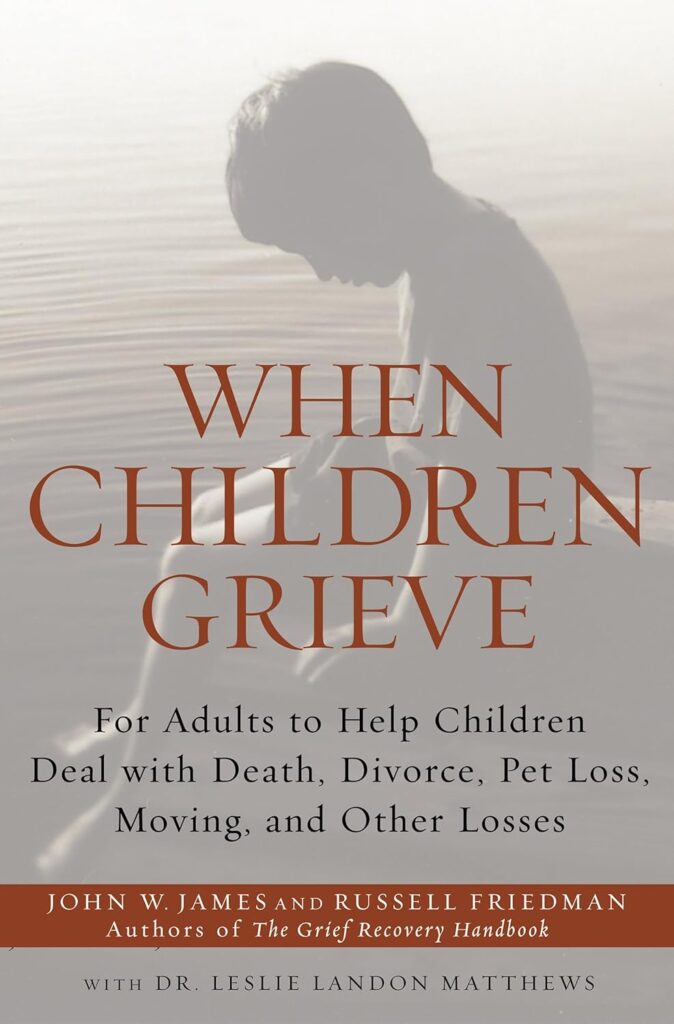
When Children Grieve
By: John W. James and Russell Friedman
Target Age Range: parents/caregivers of young people ages 4-18
This foundational guide helps adults understand how children experience and express grief — and how well-intended but dismissive responses (“be strong,” “don’t cry”) can unintentionally increase emotional isolation. The authors offer clear, compassionate insights into how to validate kids’ feelings, model healthy emotional expression, and walk alongside them through loss — whether it’s the death of a loved one or another life disruption
Read First If… you want to better understand how to support a grieving child with presence and permission, especially if you’re navigating your own losses or grew up with less emotional openness around grief
Foster Care & Adoption
Start Here If...
You’re parenting a child through foster care, adoption, or kinship care — and you’re seeking guidance that honors the impact of early adversity, identity loss, and attachment disruption. This section is for caregivers who want to go beyond behavior management and nurture long-term healing through safety, trust, and relationship. These books offer support that is trauma-informed, identity-affirming, and grounded in connection
What These Books Have In Common
Parenting a child who has experienced separation, loss, or complex trauma requires a different lens. These books offer practical tools and powerful mindset shifts rooted in attachment theory, relational neuroscience, and lived experience. Whether you’re navigating big emotions, sensory needs, or moments of disconnection, these titles will help you parent with more empathy, confidence, and compassion.
📌 Many of the books featured in other sections — especially those on connection-based parenting, big feelings and behaviors, and neurodivergence — are also deeply relevant for adoptive and foster families. You’ll see Raising Kids with Big Baffling Behaviors cross-referenced here, and we encourage you to explore other titles across sections based on your child’s unique needs.

Raising Kids with Big Baffling Behaviors
By: Robyn Gobbel, lcsw
Target Age Range: Parents/Caregivers of young people ages 3–12; especially helpful for foster and adoptive parents
This book offers a deeply compassionate, neuroscience-informed approach to understanding and responding to intense or confusing behaviors. Written with caregivers of children impacted by trauma and neurodivergence in mind, it weaves in a powerful narrative of the author’s work with an adoptive parent of a 10-year-old, making it especially relatable to parents and caregivers in similar situations
Read First If… you’re feeling overwhelmed and need a deeply compassionate, grounding framework to help make sense of your child’s big emotions and outbursts
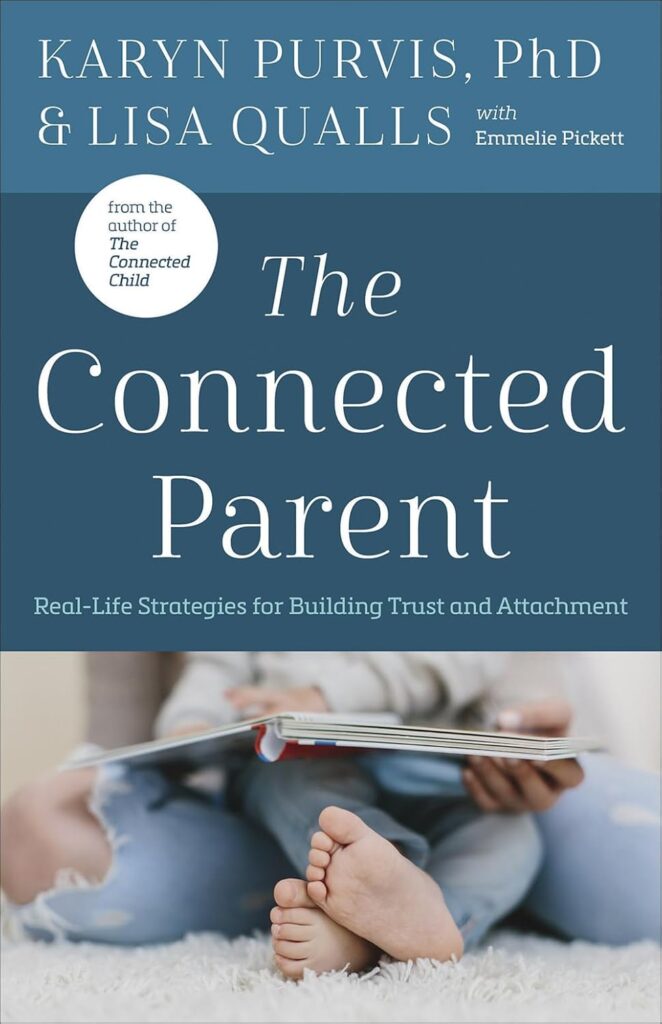
The Connected Parent
By: Karyn Purvis, phd and lisa qualls
Target Age Range: Parents/Caregivers of young people of all ages; best for caregivers raising children through adoption or foster care
This follow-up to The Connected Child shares real-world stories, hard-earned lessons, and attachment-based strategies for parenting kids from hard places. Lisa Qualls, an adoptive parent, writes candidly about her journey, while Purvis offers insights rooted in TBRI®. It’s more emotionally nuanced than its predecessor and encourages grace — both for your child and yourself
Read First If… you’re looking for relatable encouragement and connection-focused tools from someone who’s walked the road of adoptive parenting
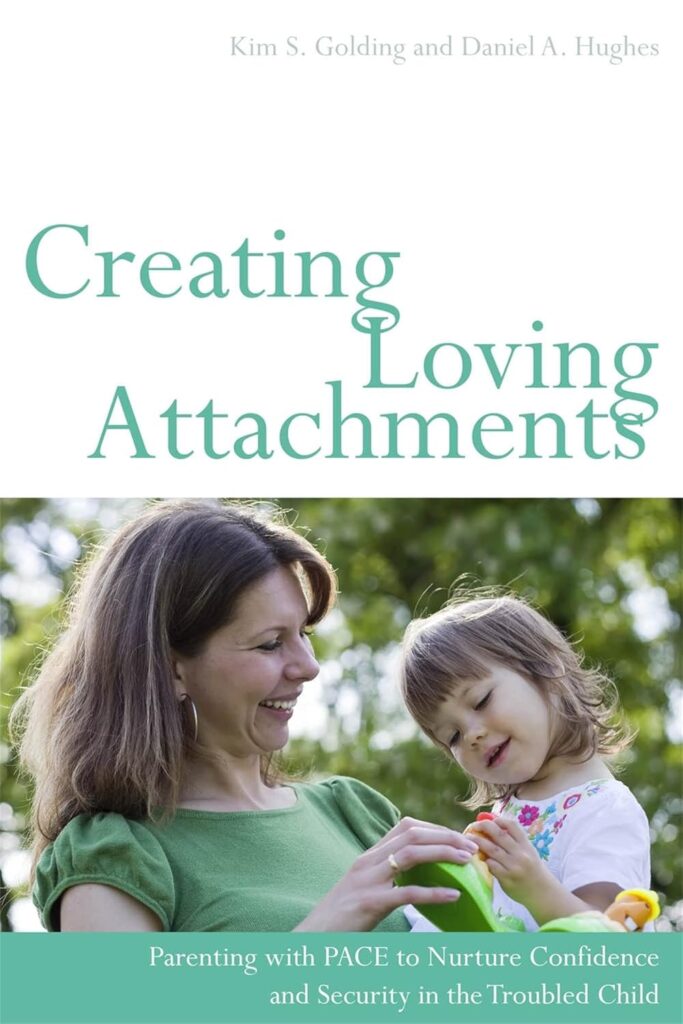
Creating Loving Attachments
by: Kim A. Golding and Daniel A. Hughes
Target Age Range: Parents/caregivers of young people ages 4–14; ideal for caregivers of children with early attachment trauma
Grounded in the PACE model (Playfulness, Acceptance, Curiosity, Empathy), this book provides a framework for creating emotional safety and rebuilding trust. Golding and Hughes blend theory and practice to help caregivers respond to challenging behaviors with connection and attunement, not control. Especially useful for children with relational trauma or early loss
Read First If… your child struggles to trust, push you away emotionally, or vacillate between closeness and rejection — and you want a roadmap to repair
Puberty & Sexual Development
Start Here If...
You want to have open, honest conversations with your child about bodies, puberty, and sex — but you’re not exactly sure where (or when) to begin. These topics can feel overwhelming or awkward, especially if they weren’t talked about much when you were growing up. This section is here to support you as you create a foundation of trust, curiosity, and connection. Whether your child is just starting to ask questions or you’re heading into the teen years, these books can help you feel more confident and connected as you navigate these important conversations together
What These Books Have In Common...
These books honor the idea that children deserve accurate, affirming information about their bodies, emotions, and relationships — from trusted adults. They approach puberty and sexual development in ways that are inclusive of all genders and family structures, grounded in science, and respectful of kids’ autonomy and readiness. Whether you’re laying a foundation in early childhood or navigating more complex conversations with a tween or teen, these resources can support you every step of the way
📌 Many of the books in this section are written for children and tweens to read alongside a trusted adult or on their own — helping to foster connection, curiosity, and shared language. We recommend you read the book through first before sharing with your child. Some books go into more detail than others
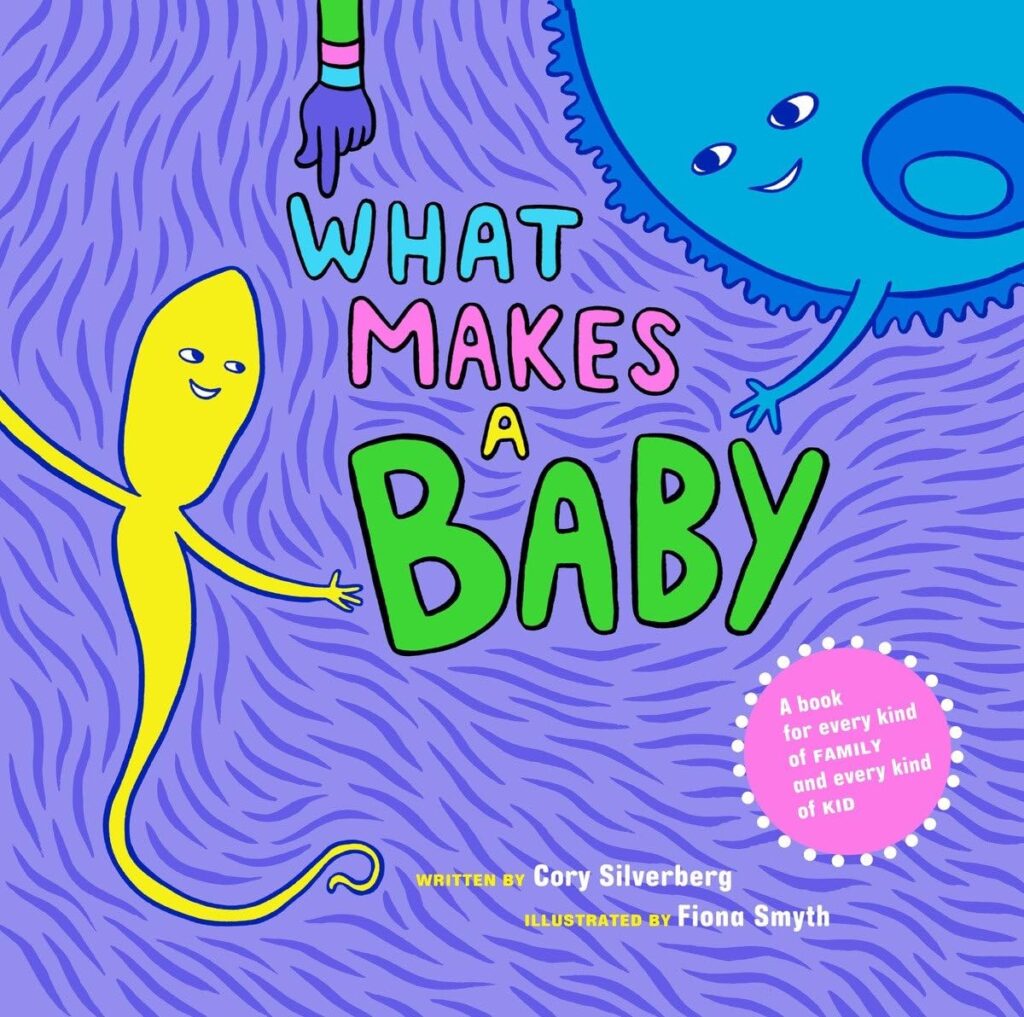
What Makes A Baby
By: Cory Silverberg And FIona SMith
Target Age Range: 2-5 and their parents/ caregivers
This beautifully illustrated book introduces young children to where babies come from using inclusive, age-appropriate language. It’s ideal for early conversations, centering curiosity while affirming all gender identities, family structures, and methods of conception
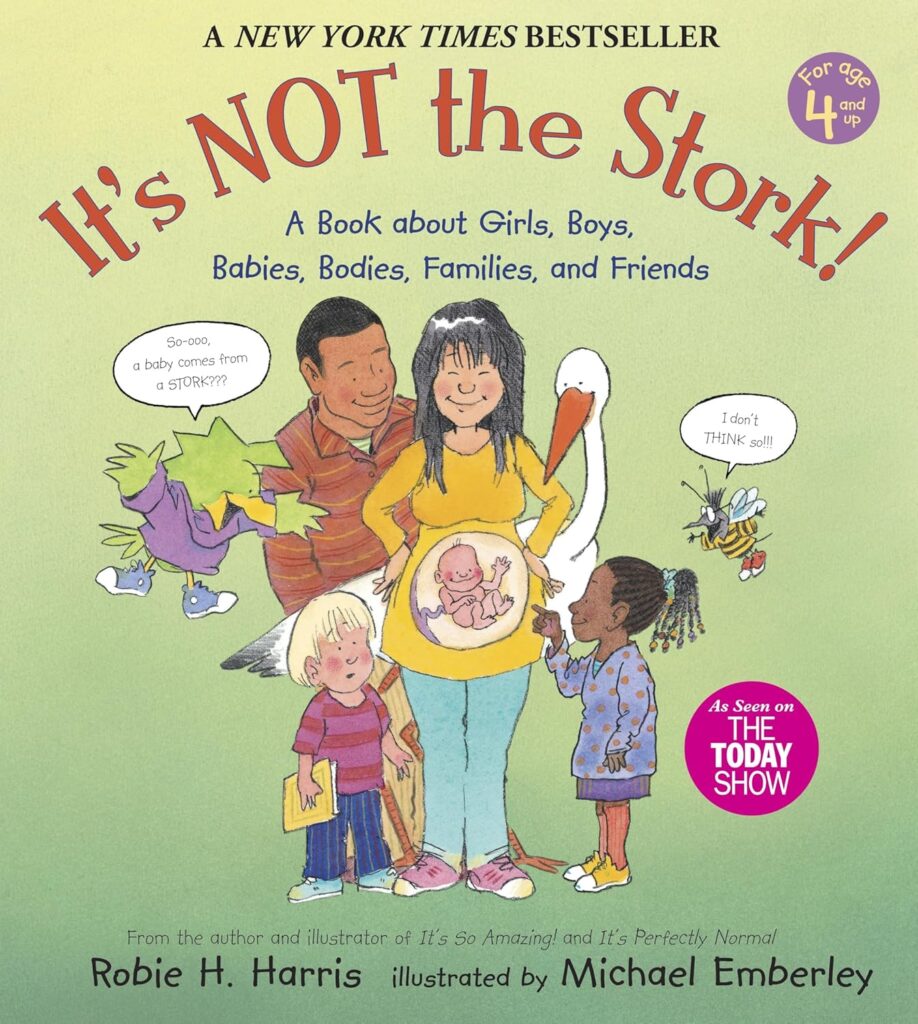
It's NOT the Stork!
By: Robie H. Harris
Target Age Range: 4-8 and their parents/ caregivers
With cheerful illustrations and clear language, this book helps young kids learn about their bodies, how babies are made, and the different ways families are formed. It offers a gentle, fact-based foundation for healthy, ongoing conversations about sexuality and relationships
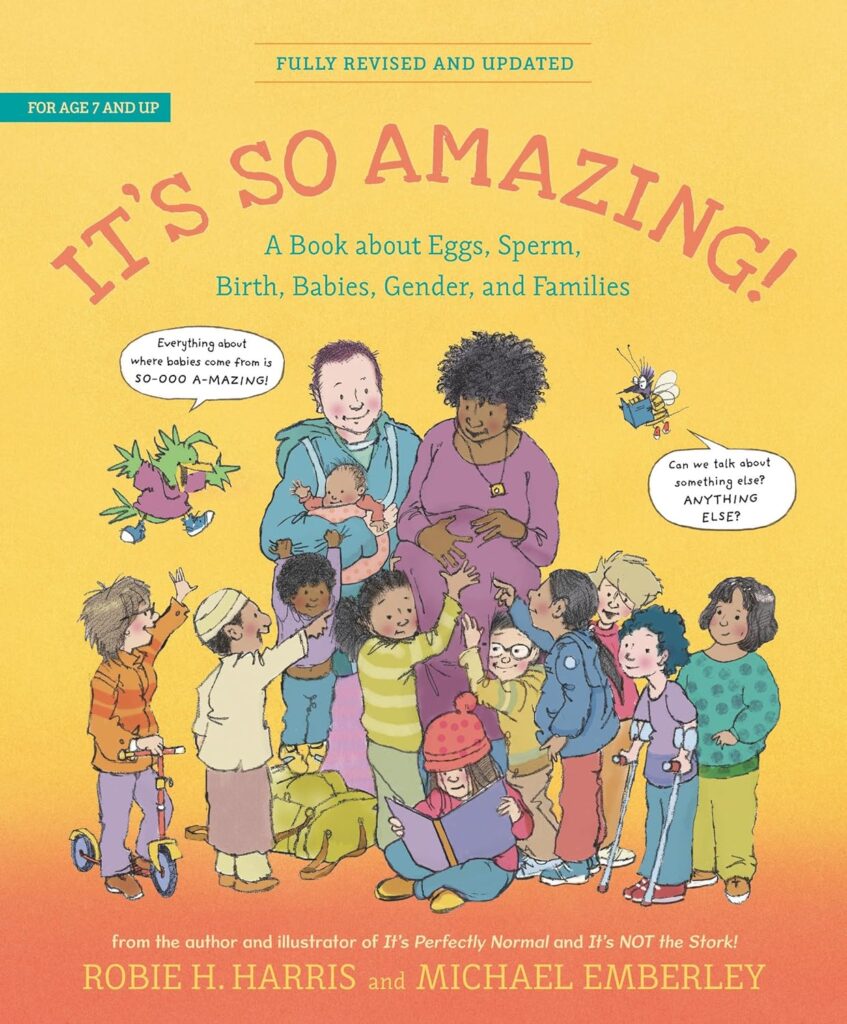
It's So Amazing!
By: Robie Harris and Michael Emberley
Target Age Range: 7-10 and their parents/ caregivers
This trusted resource explains everything from anatomy and puberty to fertilization and birth, using affirming, inclusive language. It helps curious kids understand how bodies work and how families are formed—with warmth, clarity, and scientific accuracy
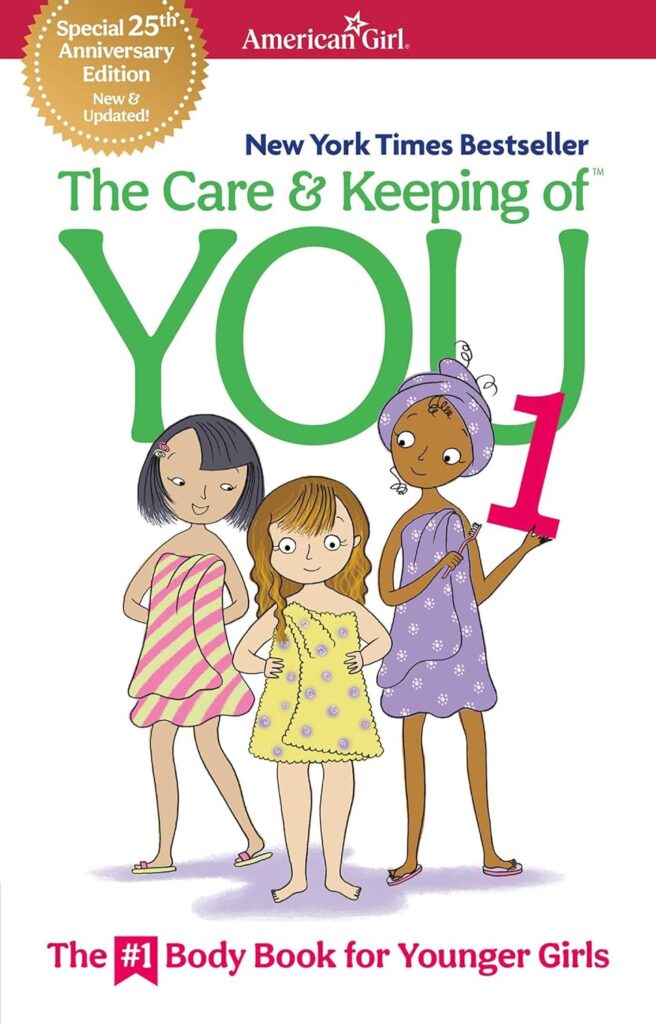
The Care & Keeping of You 1
By: Valorie Shaefer And Cara Natterson
Target Age Range: 7-10 and their parents/ caregivers
A go-to guide for younger girls navigating body changes, hygiene, and emotional ups and downs. This reassuring, practical book is designed to build body literacy and self-care skills before the onset of puberty
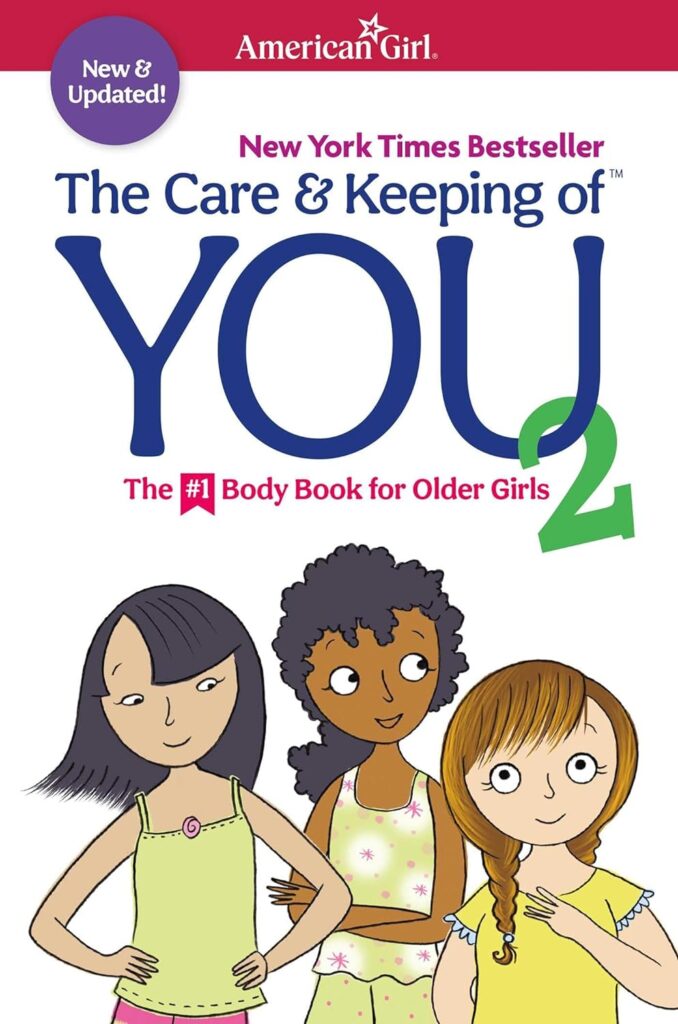
The Care & Keeping of You 2
By: Cara Natterson
Target Age Range: 9-11 and their parents/ caregivers
Designed for girls who are already experiencing body changes, this follow-up book offers age-appropriate advice on topics like periods, bras, body image, and mood changes—with empathy and empowerment at its core
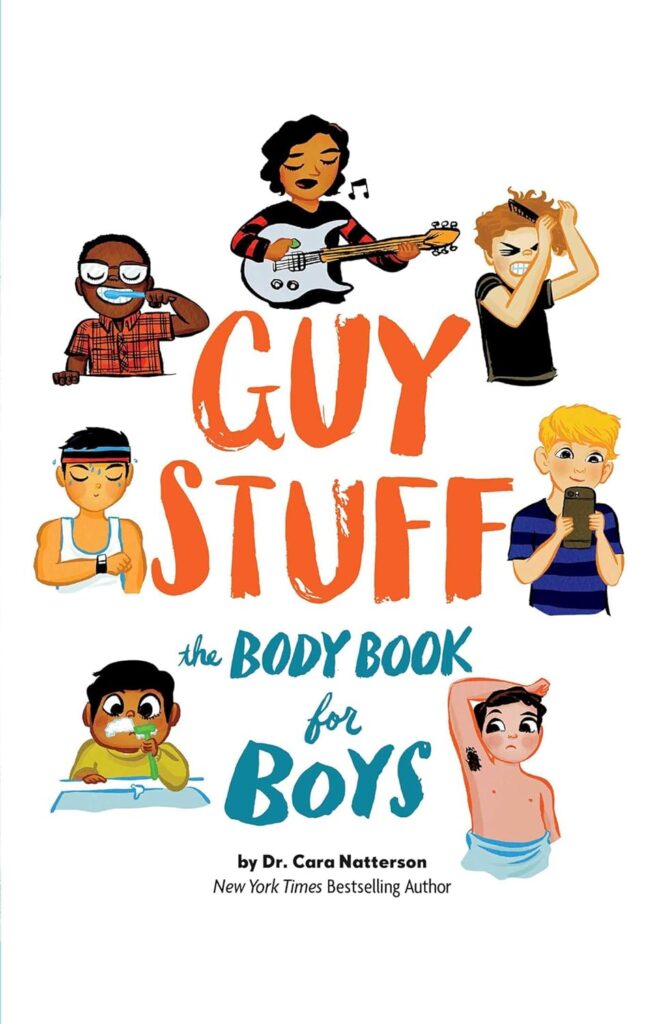
Guy Stuff: The Body Book for Boys
By: Cara Natterson
Target Age Range: 9-11 and their parents/ caregivers
Written by a pediatrician, this straightforward, friendly guide gives boys the tools to understand their bodies, emotions, and early puberty changes—helping them feel more confident and less confused
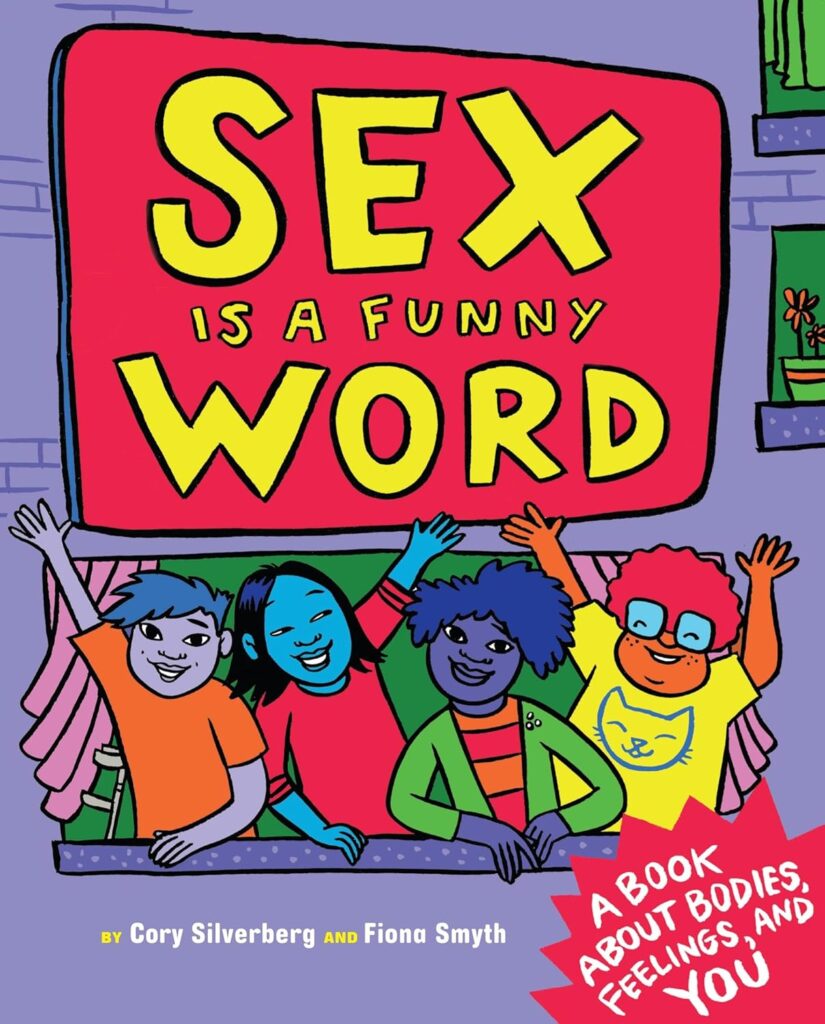
Sex Is A Funny Word
By: Cory Silverberg And Fiona SMith
Target Age Range: 9-11 and their parents/ caregivers
With vibrant illustrations and affirming language, this award-winning book helps kids explore topics like gender, feelings, boundaries, and family with curiosity and confidence. It’s inclusive of all identities and great for sparking ongoing, open conversations
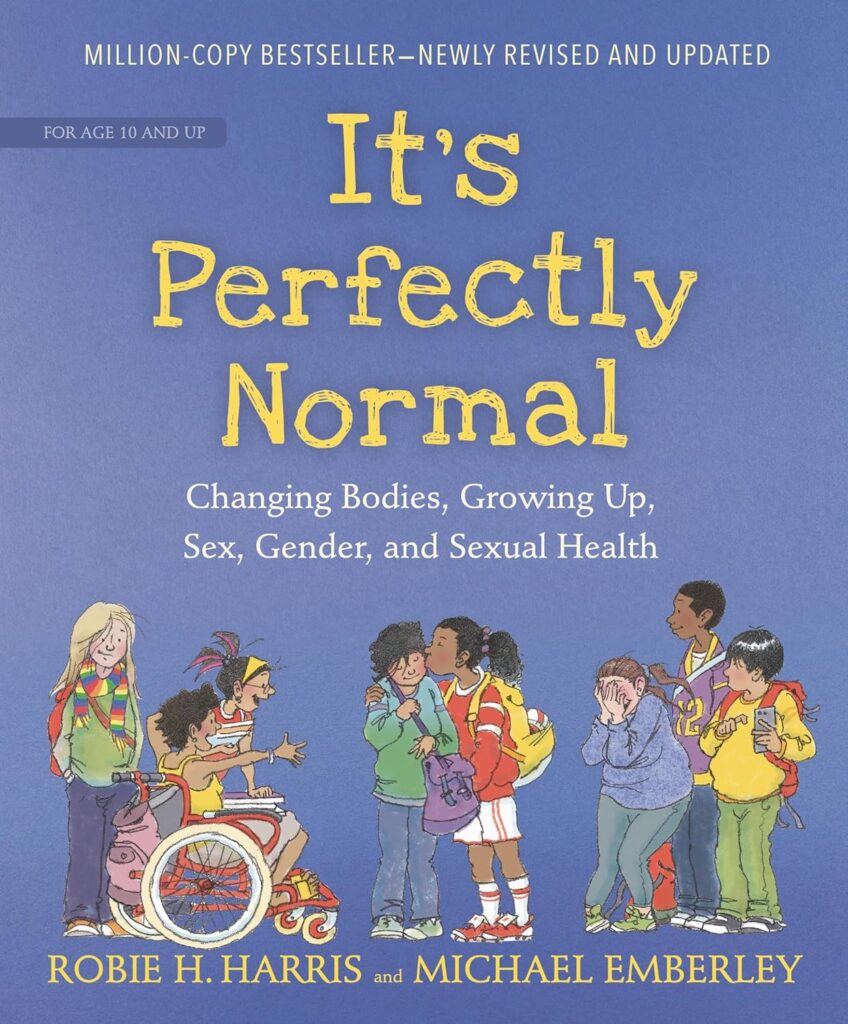
It's Perfectly Normal
By: Robie Harris and Michael Emberley
Target Age Range: 10+ and their parents/ caregivers
An honest, science-based resource for tweens and teens navigating puberty, sexual development, gender identity, and relationships. It provides accurate, nonjudgmental information that empowers young people to make informed, respectful decisions
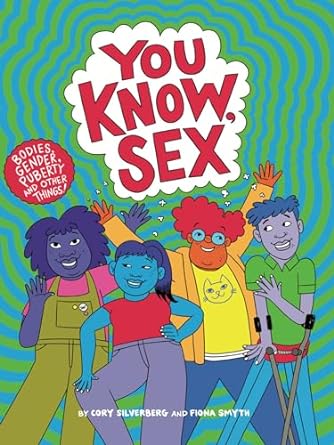
You Know, Sex
By: Cory SIlverberg And Fiona SMith
Target Age Range: 10+ and their parents/ caregivers
With humor and heart, this expansive graphic-novel-style book covers everything from puberty and attraction to gender, power, and communication. It’s an affirming, trauma-informed resource that centers inclusivity and respect
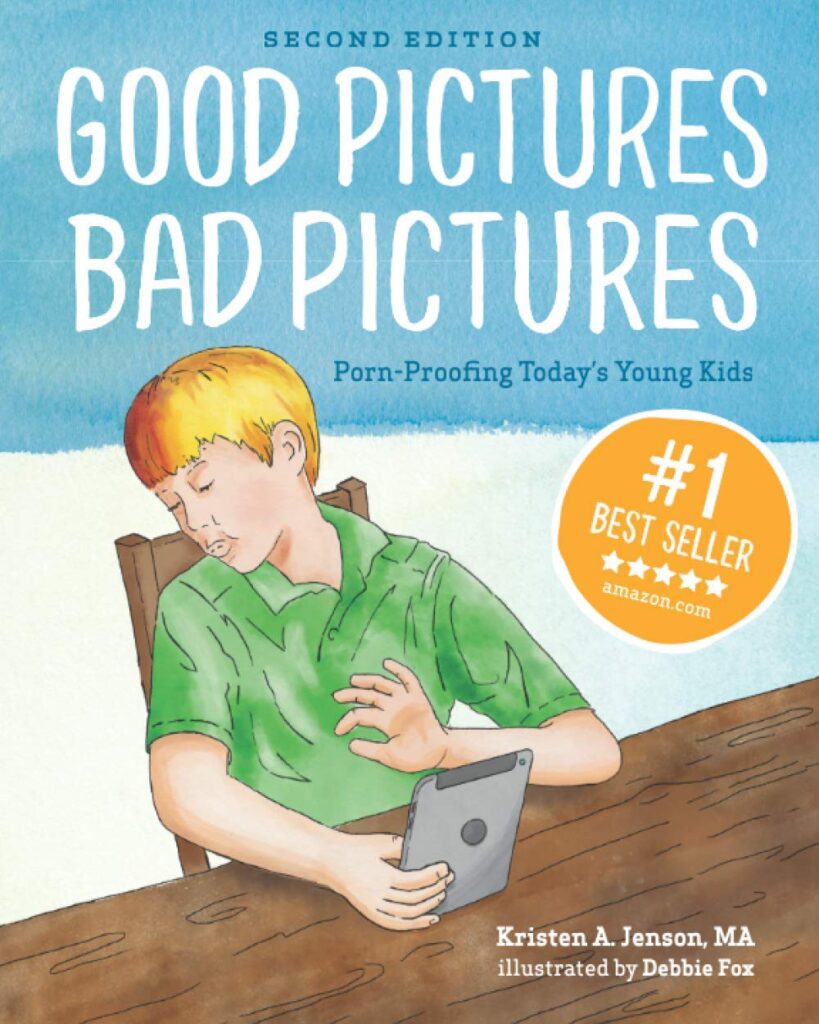
Good Pictures Bad Pictures: Porn Proofing Today's Young Minds
By: kristen A. Jenson, MA
Target Age Range: 6-11 and their parents/ caregivers
A read-aloud book that teaches young children how to recognize and respond to inappropriate online content. It uses child-friendly language to teach about brain development, self-regulation, and safety plans. While somewhat moralistic in tone, it’s one of the most widely used tools for early conversations
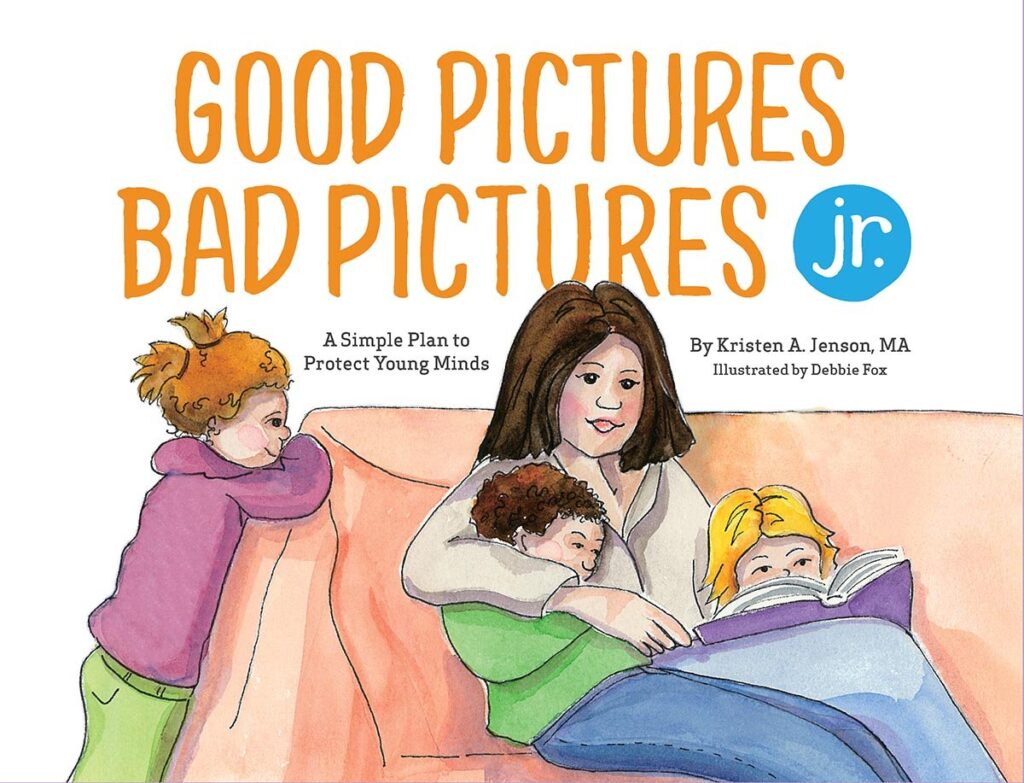
Good Pictures Bad Pictures Jr
By: Kristen A. Jenson, MA
Target Age Range: 3-6 and their parents/ caregivers
This book is grounded in developmental science and mental health research, offering age-specific guidance for navigating porn, consent, gender expectations, and media literacy. It’s inclusive, non-shaming, and affirming of healthy sexuality and curiosity
Body Autonomy, Consent, and Safe Touch
Start Here If...
you’re looking for ways to help your child understand that their body belongs to them — and that they have the right to say no, speak up, and feel safe in their own skin. Whether you’re laying the groundwork for healthy boundaries, supporting a child with sensory sensitivities, or responding to past experiences of confusion or trauma, this section offers gentle, empowering tools to help kids build body awareness and trust
What These Books Have In Common
These books all reinforce a clear and compassionate message: you are the boss of your body. They give children age-appropriate language and confidence to recognize unsafe situations, understand consent, and express boundaries respectfully. Some use storytelling, others use humor or direct instruction — but all of them support open, ongoing conversations between kids and caregivers, grounded in respect, clarity, and safety
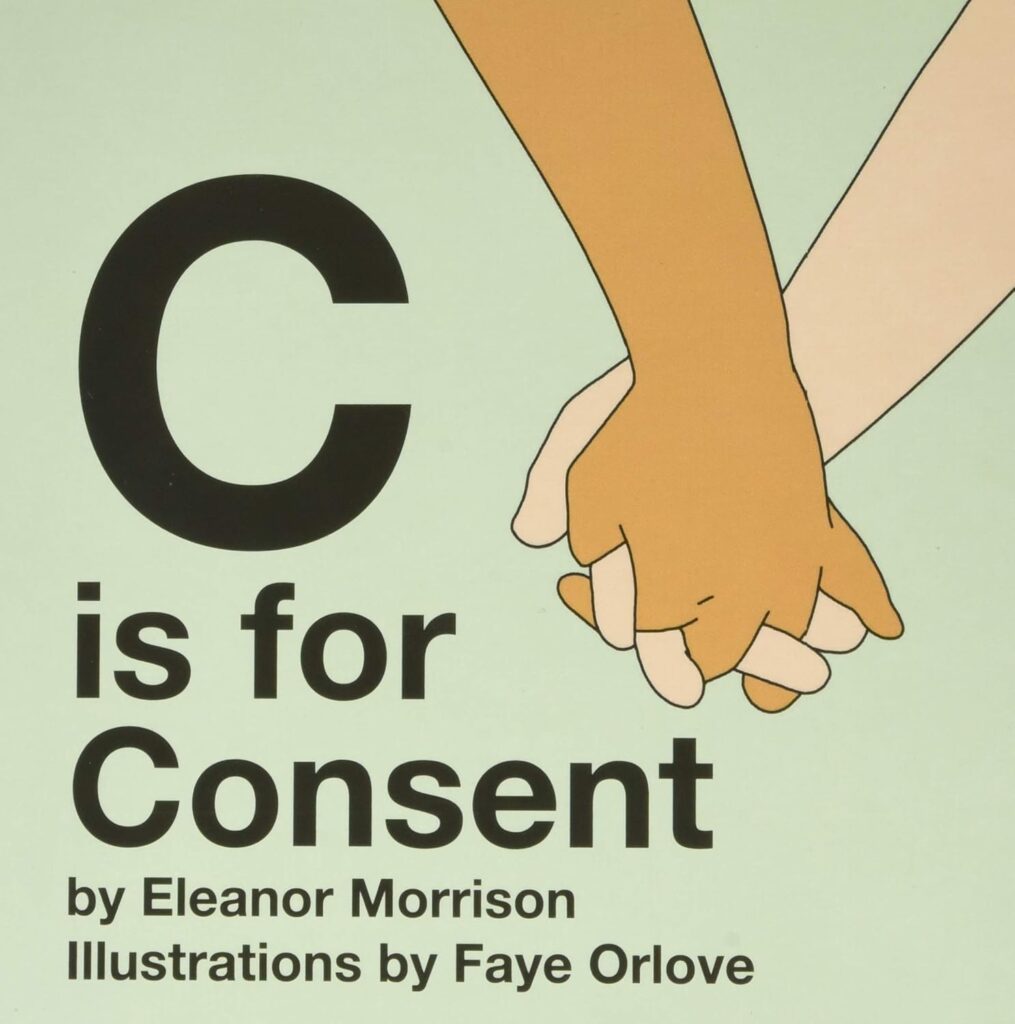
C is for Consent
By: Eleanor Morrison
Target Age Range: 2-6 and their parents/ caregivers
A sweet, alphabet-style board book that introduces young children to consent and bodily autonomy. It models asking permission before hugs, respecting others’ boundaries, and understanding that “no” means “no” — all in a calm, age-appropriate way
Read First If… you’re looking for a gentle, visual entry point to body safety for toddlers or preschoolers
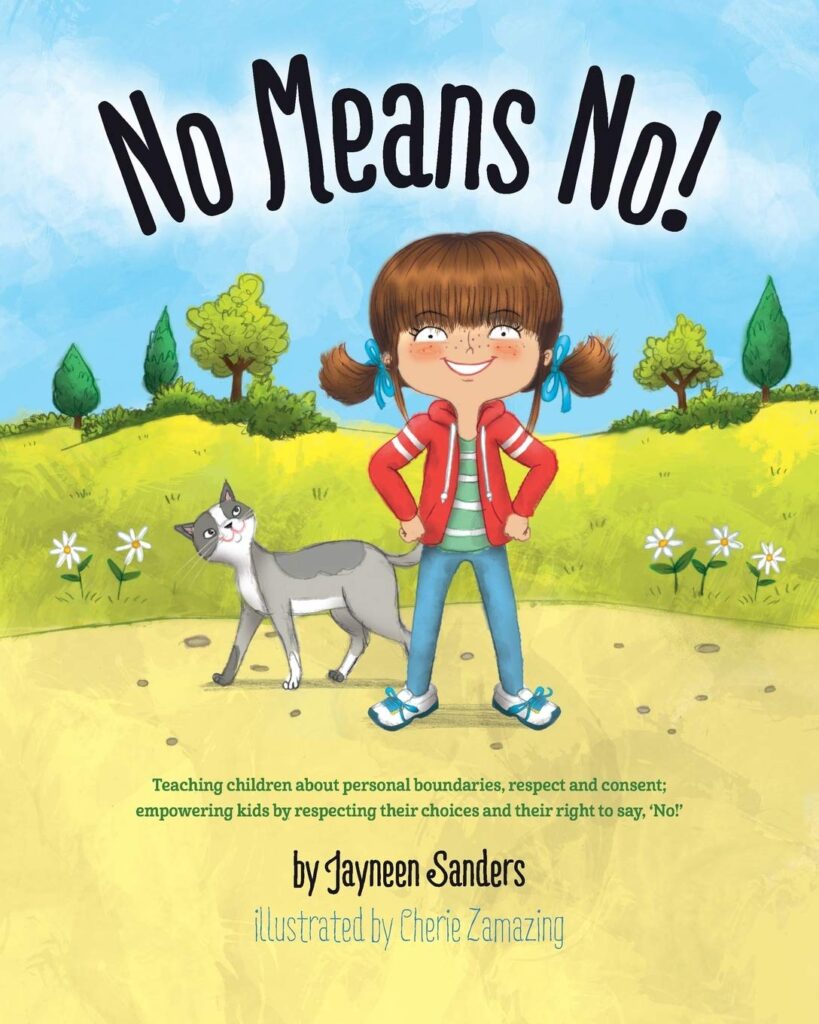
No Means No!
By: Jayneen Sanders
Target Age Range: 3-7 and their parents/ caregivers
This story-based picture book empowers kids to say no to unwanted touch and assert their boundaries with confidence.Through repetition and real-life scenarios, it reinforces that children can trust their instincts and that their voice matters — even with people they know
Read First If… you want a clear, affirming story that teaches kids how to say “no” and feel good about it
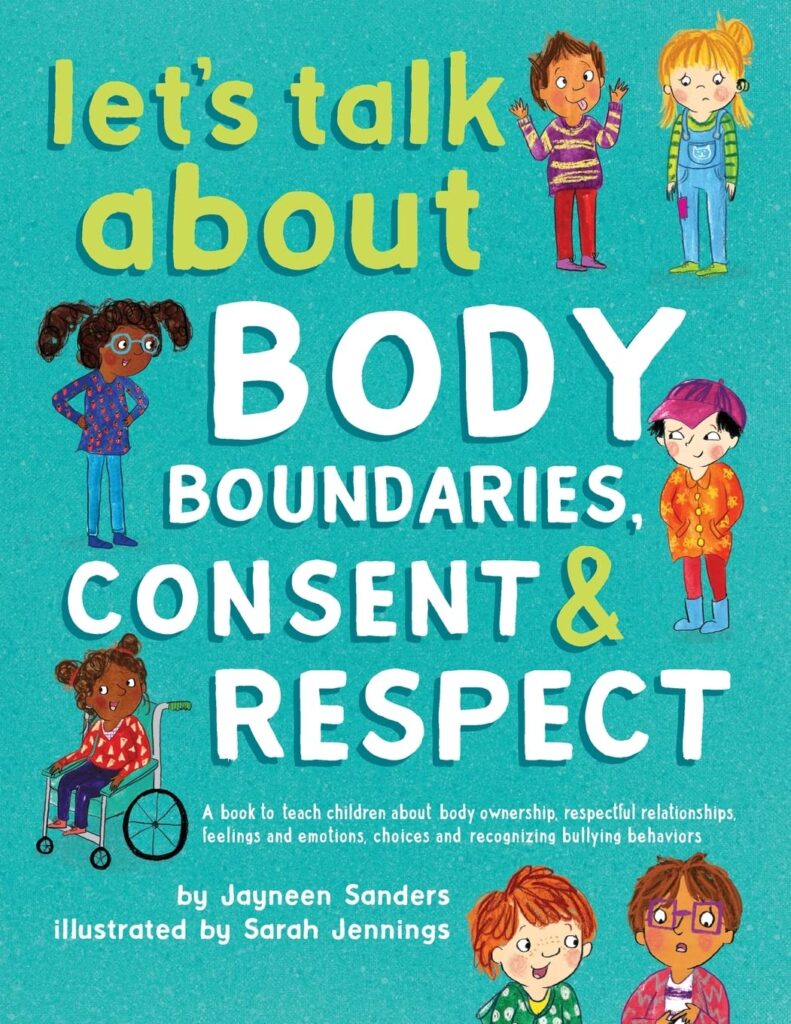
Let's Talks About Body Boundaries, Consent & Respect
By: Jayneen Sanders
Target Age Range: 5-9 and their parents/ caregivers
An interactive, discussion-driven book that walks kids through boundary-setting, consent, and respectful behavior.Includes reflection questions and concrete examples to help kids and caregivers talk together about safe touch and body rules
Read First If… you’re ready to go deeper with your child into what body boundaries look like, sound like, and feel like in everyday life
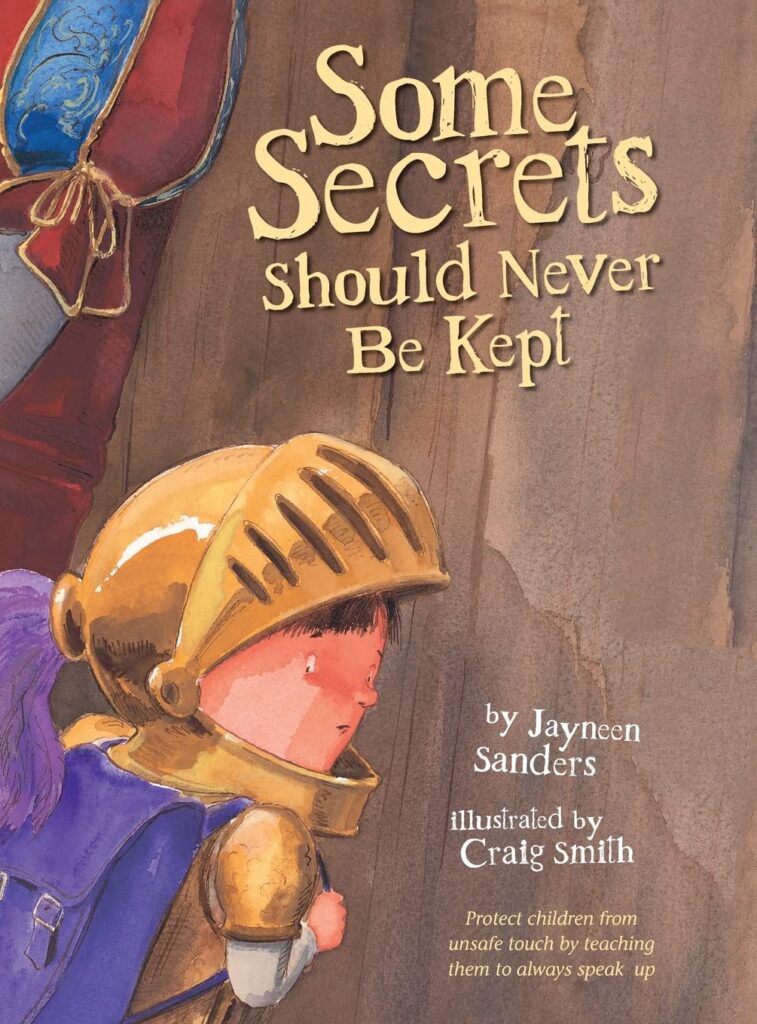
Some Secrets Should Never Be Kept
By: Jayneen Sanders
Target Age Range: 4-9 and their parents/ caregivers
A sensitively told story that helps children understand the difference between good secrets and bad ones, and empowers them to speak up. It’s a powerful resource for preventing abuse, building trust, and reinforcing that children will be believed and supported if they come forward
Read First If… you’re introducing safety concepts to a child who may be vulnerable to confusion around secrets or manipulation
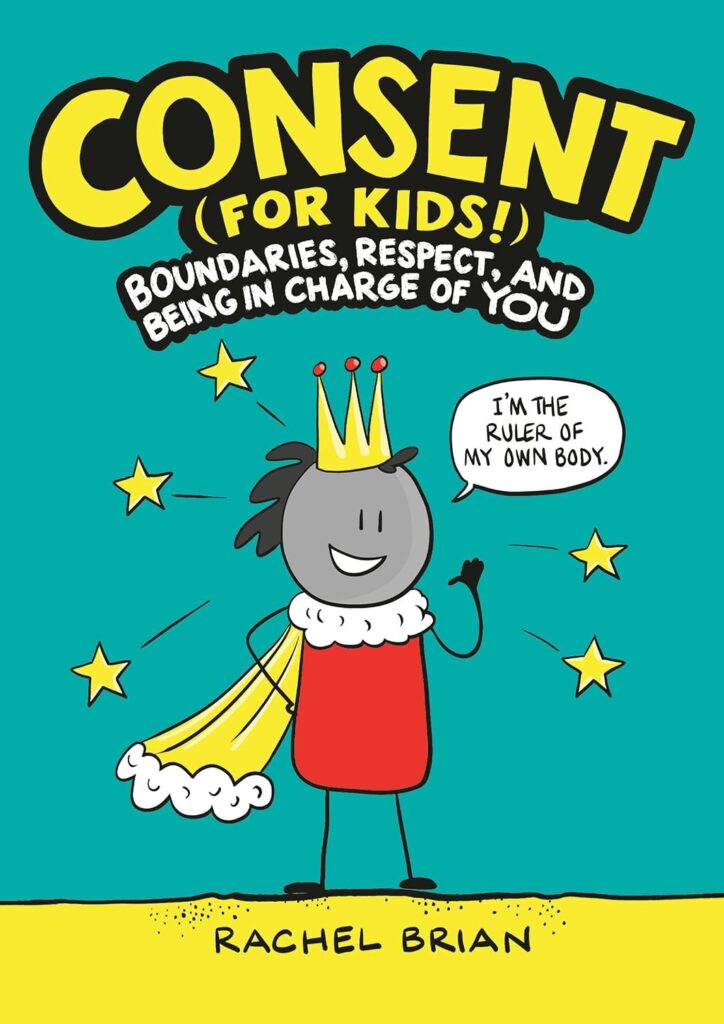
Consent (For Kids!)
By: Rachel Brian
Target Age Range: 5-10 and their parents/ caregivers
A funny, graphic-style book that helps kids understand consent not just in terms of touch, but also in everyday interactions. It’s playful and highly readable, while delivering a strong message about mutual respect and personal agency
Read First If… your child prefers a comic-style book on this topic!
Supporting LGBTQ+ Youth
Start Here If...
Your child has come out to you — or you’re wondering if they might — and you want to be the safe, steady presence they need. Whether you’re processing your own feelings, looking for language to affirm your child’s identity, or trying to understand what it means to parent in an inclusive and supportive way, this section is here to help. These books will guide you in showing up with love, curiosity, and confidence, even if you’re still learning
What These Books Have In Common
Each of these titles centers the voices, needs, and experiences of LGBTQ+ youth — and the caregivers who walk alongside them. They offer practical tools and heartfelt stories that help families navigate conversations about gender, sexuality, pronouns, and identity. While some focus on specific identities, others address the bigger picture: how to create a home where all children feel seen, safe, and celebrated. Whether you’re brand new to this or seeking deeper understanding, these books offer both guidance and hope
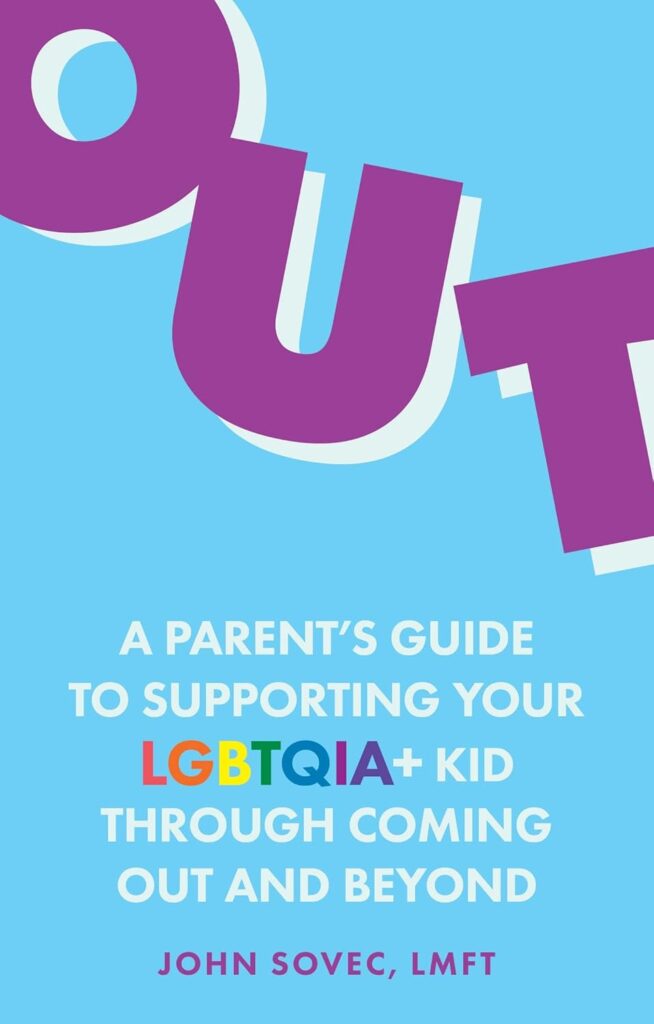
Out
By: John Sovec, LMFT
Target Age Range: Parents/caregivers of tweens and teens
Written by a therapist who specializes in working with LGBTQ+ youth, this book provides emotional insight and practical steps for supporting your child before, during, and after coming out. Sovec addresses common caregiver questions while emphasizing the importance of staying connected and centered — even if you’re processing big emotions of your own
Read First If… your child has just come out (or you suspect they might soon), and you want to be a safe, emotionally attuned support while still finding your footing
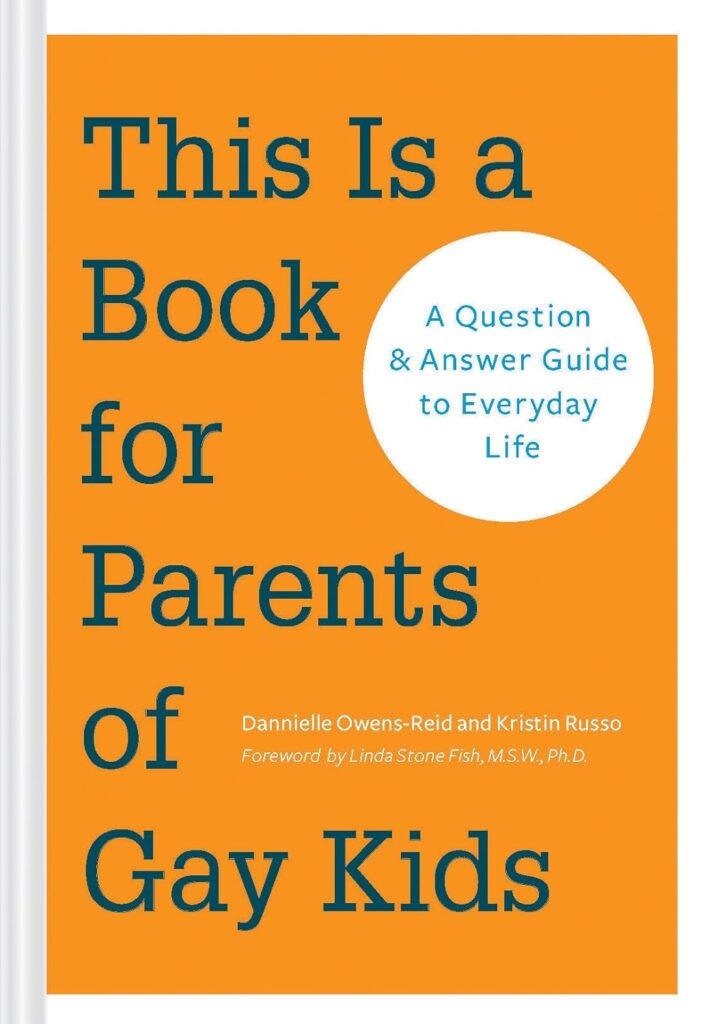
This is a Book for Parents of Gay Kids
By: Dannielle Owens-Reid and Kristin Russo
Target Age Range: Parents/caregivers of tweens and teens
Written in a warm, conversational tone, this book is structured around real questions from parents of LGBTQ+ kids. From “Is this a phase?” to “How do I talk to grandparents?”, it provides straightforward, judgment-free answers while centering unconditional love and inclusion
Read First If… you’re overwhelmed by questions and want a clear, non-clinical, accessible entry point to support your child with more confidence
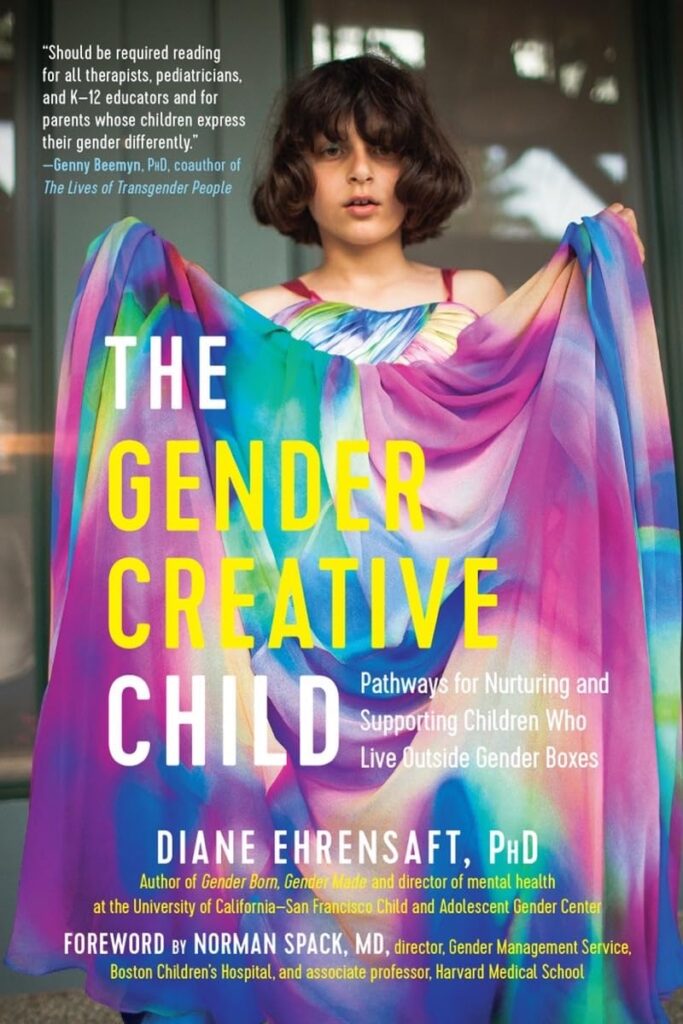
The Gender Creative Child
By: Diane Ehrensaft, PhD
Target Age Range: Parents/caregivers of young people ages 2–12
This affirming guide explores how children express gender across development, and how caregivers can respond with flexibility, curiosity, and care. Ehrensaft draws on developmental psychology, attachment theory, and clinical experience to offer a deeply respectful framework for raising gender-expansive children
Read First If… your child is expressing gender in ways that don’t fit the binary, and you want to support them without fear, shame, or rushing to label
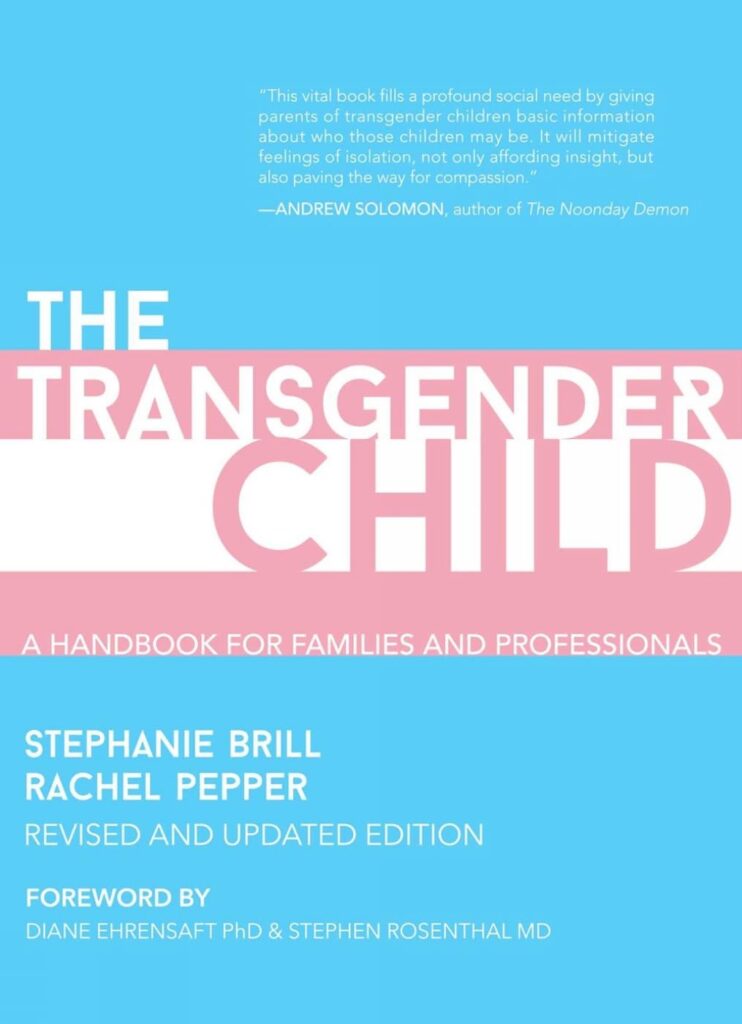
The Transgender Child
By: Stephanie Brill and Rachel Pepper
Target Age Range: Parents/caregivers of transgender young people ages 3–12
A comprehensive, practical guide for parents navigating the early stages of gender exploration or transition with their child. It includes everything from terminology to medical options to school advocacy — all framed through an affirming, child-centered lens
Read First If… your child identifies as transgender or is beginning to explore their gender identity, and you’re seeking clear, supportive guidance for the journey ahead
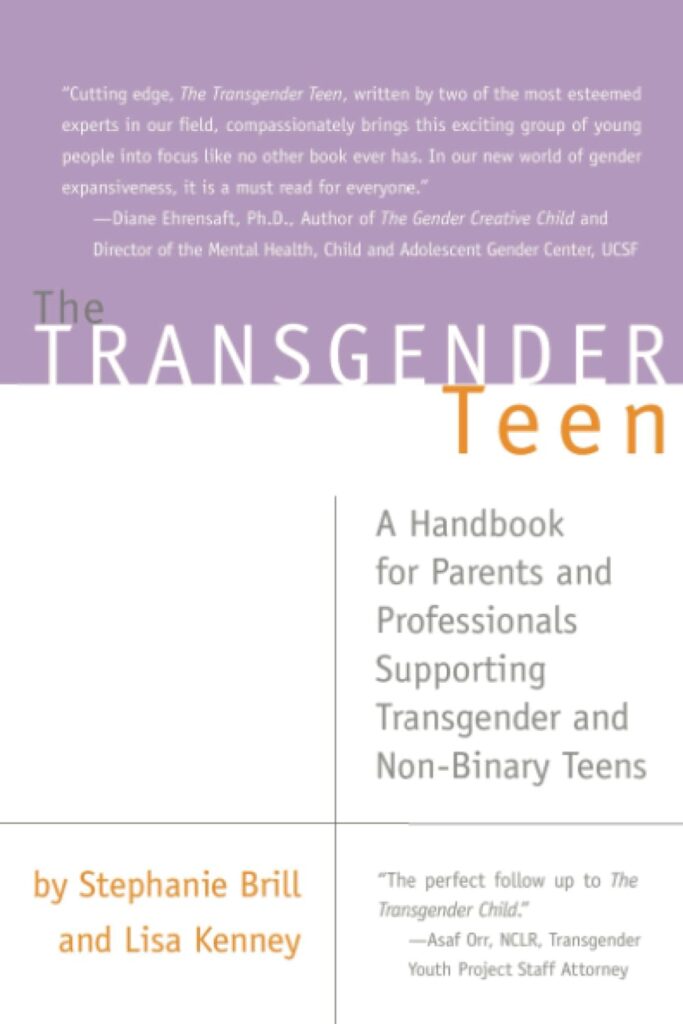
The Transgender Teen
By: Stephanie Brill and Lisa Kenney
Target Age Range: Parents/caregivers of young people ages 12–18
This follow-up to The Transgender Child offers essential information for parenting trans and non-binary teens during a time of rapid change. It addresses emotional wellbeing, mental health, gender expression, social transition, school, and more — all through a lens of affirmation and autonomy
Read First If… you’re parenting a transgender or non-binary teen and want a guide that balances the emotional, developmental, and advocacy aspects of this stage
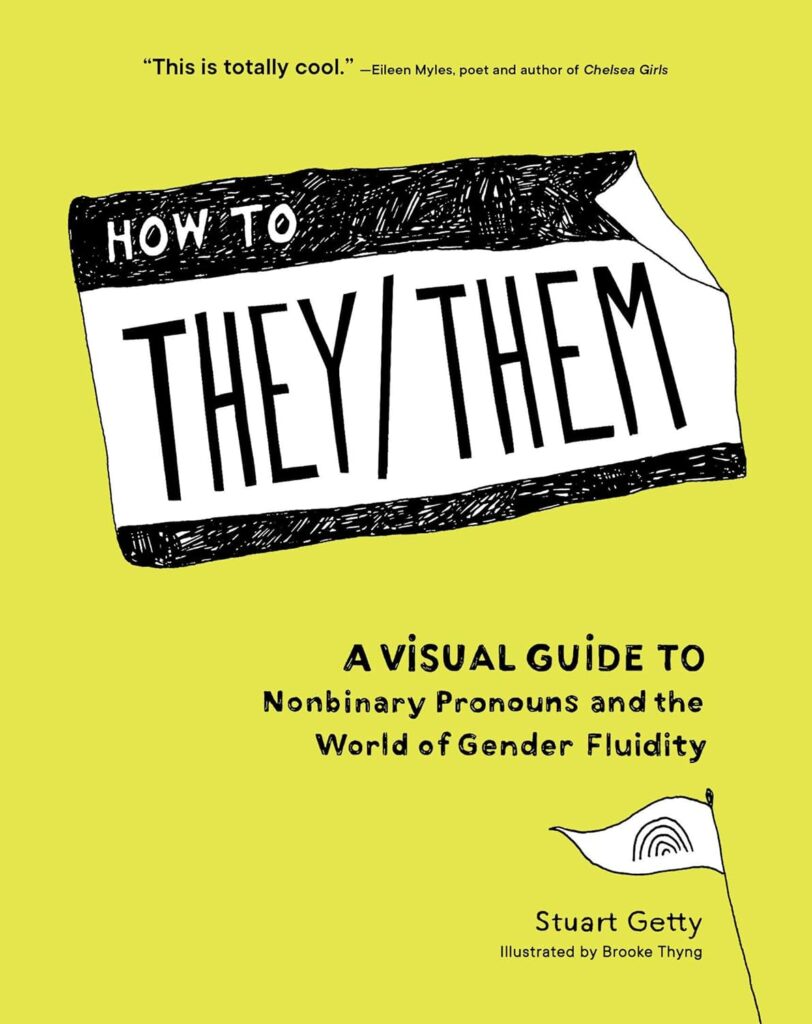
How To They/Them
By: Stuart Getty
Target Age Range: Teens and adults; accessible for older tweens and up
This illustrated guide breaks down gender-neutral pronouns, gender identity, and respectful communication with clarity and humor. It’s disarming, affirming, and packed with insight — great for both adults and youth who want to better understand the evolving world of gender
Read First If… you’re trying to understand nonbinary identities and pronouns — whether for your child, a friend, or yourself — and want a friendly, engaging introduction
Technology & Screen Use
Start Here If...
You’re feeling unsure how to support your child’s relationship with screens — or if you’ve noticed tension around tech, social media, or video games and want to respond with clarity and care. This section is for caregivers who want to move beyond fear-based advice and toward thoughtful, connected conversations about digital life. These books offer practical tools, developmental insight, and research-backed guidance for parenting in the digital age
What These Books Have In Common
Rather than promoting one-size-fits-all rules or rigid restrictions, these books approach screen use with empathy, nuance, and science. They recognize that digital technology is woven into our kids’ lives — and that our goal isn’t to eliminate screens, but to guide young people in developing balance, emotional regulation, and critical thinking. These resources support you in staying connected, building trust, and setting boundaries that reflect your child’s developmental needs and your family’s values
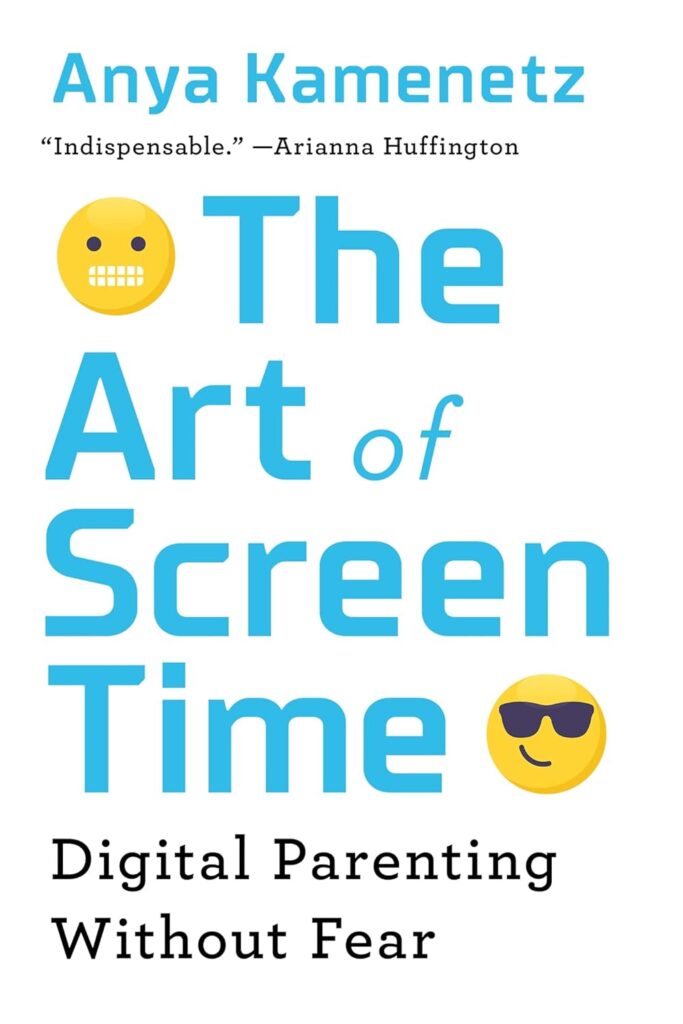
The Art of Screen Time
By: Anya Kamenetz
Target Age Range: Parents/caregivers of young people ages 3–13
This book blends research with real-life parenting wisdom to offer a flexible, judgment-free approach to screen use.Kamenetz emphasizes what matters most: staying connected to your child, modeling balance, and making thoughtful choices as a family. It’s a reassuring guide for those tired of conflicting advice and unrealistic rules
Read First If… you’re looking for a grounded, guilt-free way to think about screens in your family without resorting to extremes
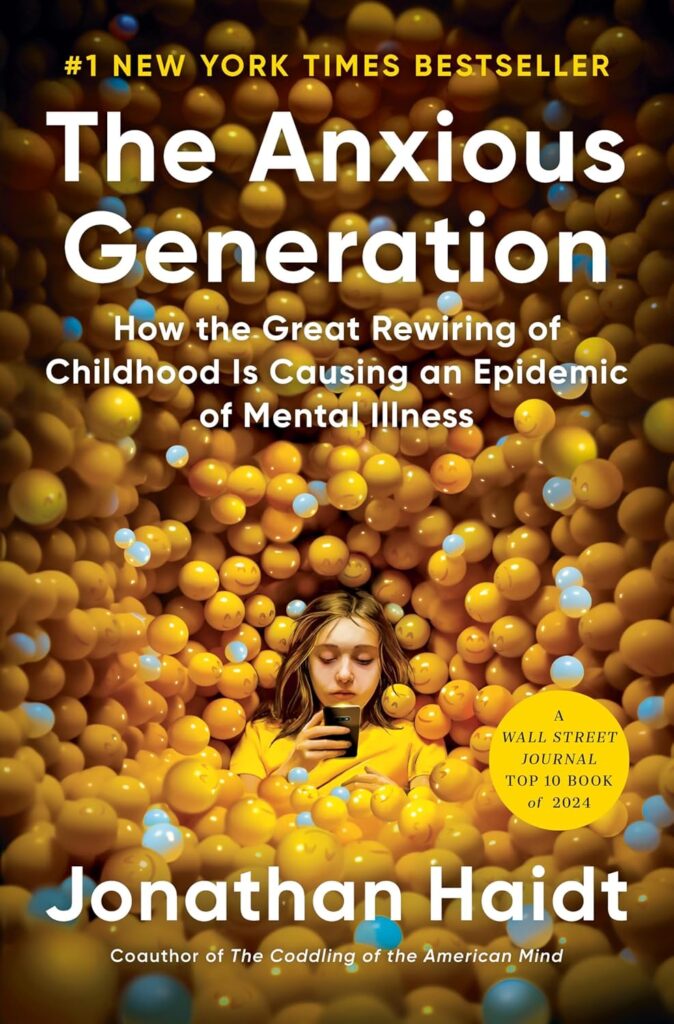
The Anxious Generation
By: Jonathan Haidt
Target Age Range: Parents/caregivers of tweens and teens (ages 10–18)
This thought-provoking book explores how the rise of smartphones, social media, and indoor childhood has contributed to rising rates of anxiety, depression, and disconnection in young people. Haidt combines developmental psychology, neuroscience, and cultural critique to argue for clear boundaries around phone access, especially in the preteen years
Read First If… you’re concerned about how tech may be impacting your child’s mental health and want a deeper understanding of the research behind why delayed access and offline connection really matter
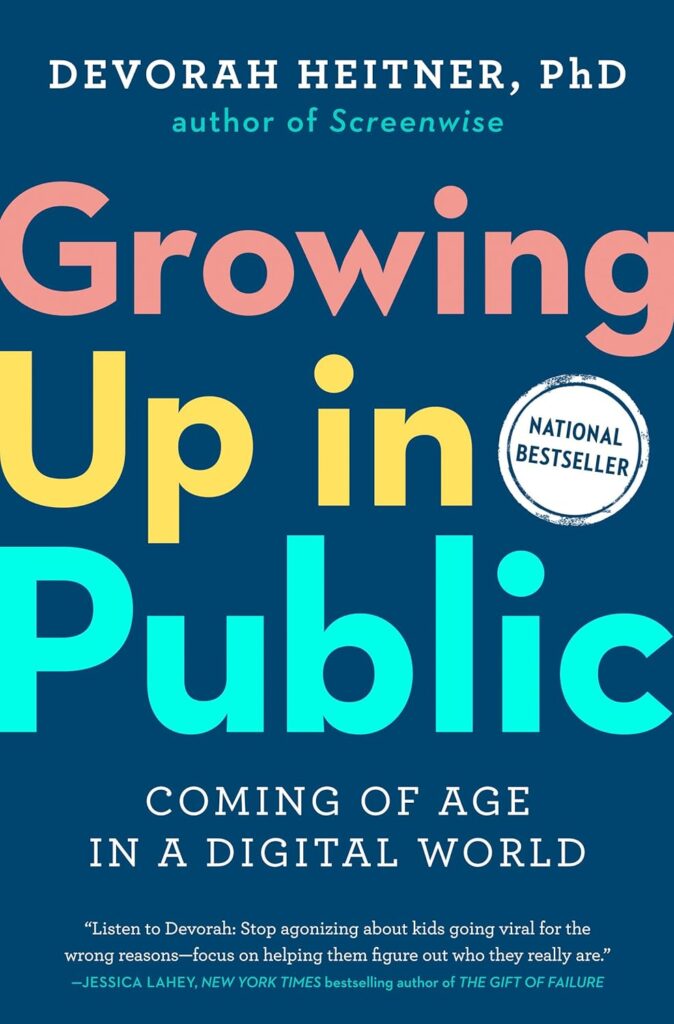
Growing Up in Public
By: Devorah Heitner, PHD
Target Age Range: Parents/caregivers of tweens and teens (ages 10–18)
This book helps caregivers support kids as they navigate the complex world of social media, online identity, and digital privacy. Heitner encourages mentorship over monitoring and offers guidance for building trust, communication, and digital wisdom — all while respecting your teen’s autonomy
Read First If… your child is using social media or online platforms, and you want to stay involved in a way that supports their growth without undermining their independence
Vetted For You
These resources are in line with foundational principles of emotional and mental wellness for children and adolescents
Our Values
When supporting young people and their parents/caregivers, we encourage connection over control, curiosity over judgment, and growth over perfection

